The best walking shoes: 15 comfortable sneakers that you can wear all day
I've tested 30 walking shoes in the last year: here are my favorites
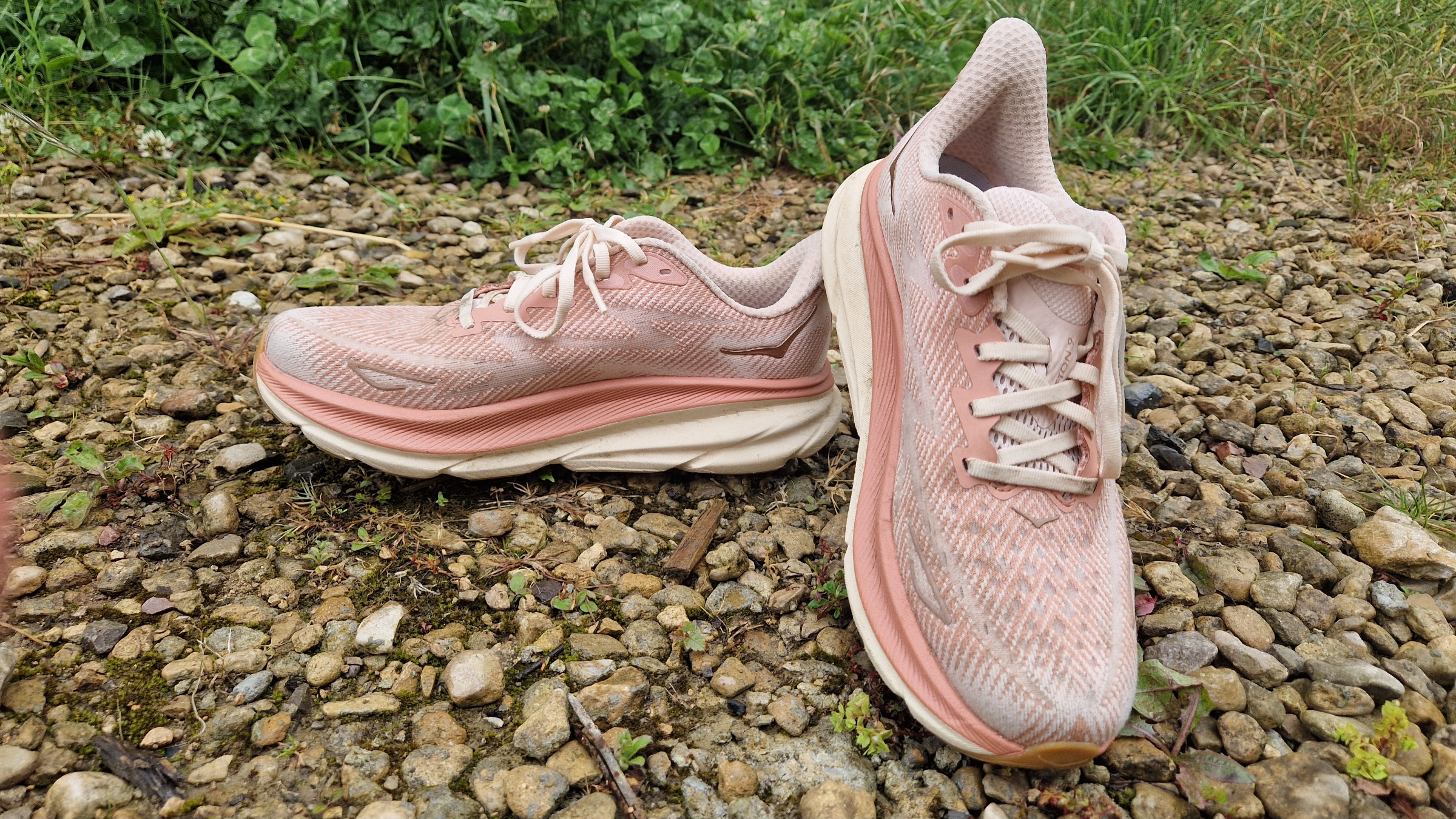
- Our expert panel
- Quick list
- Best overall
- Best on a budget
- Best for concrete
- Best slip-on
- Best for wide feet
- Best for grip
- Best for trail walks
- Best for waterproofing
- Best sandal
- Best barefoot
- Best Nike walking shoe
- Best Hoka walking shoe
- Best Brooks walking shoe
- Best New Balance walking shoe
- Best Skechers walking shoe
- Other tried and tested shoes
- How we test the best shoes for walking
- How to choose
- FAQs

I love walking: it’s free, low-impact, and boosts both your mental and physical health. I average around 8,000 steps a day, which means I’m perfectly placed to test out the latest and best walking shoes.
My ideal walking shoe has great energy return, cushioning, support and grip. In pursuit of this perfect sneaker, I’ve tested the best offerings from Skechers, New Balance, Nike, Hoka and others, making notes about what I do and don't like about each one. My current favorite is the Brooks Glycerin 22.
I spend around hours testing walking shoes each year, and I've also spoken to a podiatrist to better understand what to look for when buying footwear. She answered some of my burning questions, which I’ve pulled together in the FAQs below.
Here are my recommendations if you are looking for the very best walking shoe for your needs, whether you're on a budget, want something waterproof to keep your feet dry, or even if you're in the market for a walking sandal.
Our expert panel

Lou Mudge is Fit&Well's resident fitness writer. She walks between 6,000 and 10,000 steps every day, usually with her dog. She is a supinator, meaning her feet roll outward rather than inward, and favors neutral shoes with lots of cushioning and bounce.

Dr. Lori A. Grant is a foot and ankle surgeon and a board certified podiatrist. During her residency at Florida Hospital, she performed more than 1,200 surgical procedures. She is a specialist in sports-related foot and ankle injuries, diabetic foot care and traumatic injury. She regularly works with conditions such as bunions, heel pain, hammer toes and has completed multiple complex post-traumatic foot and ankle repairs.
The quick list
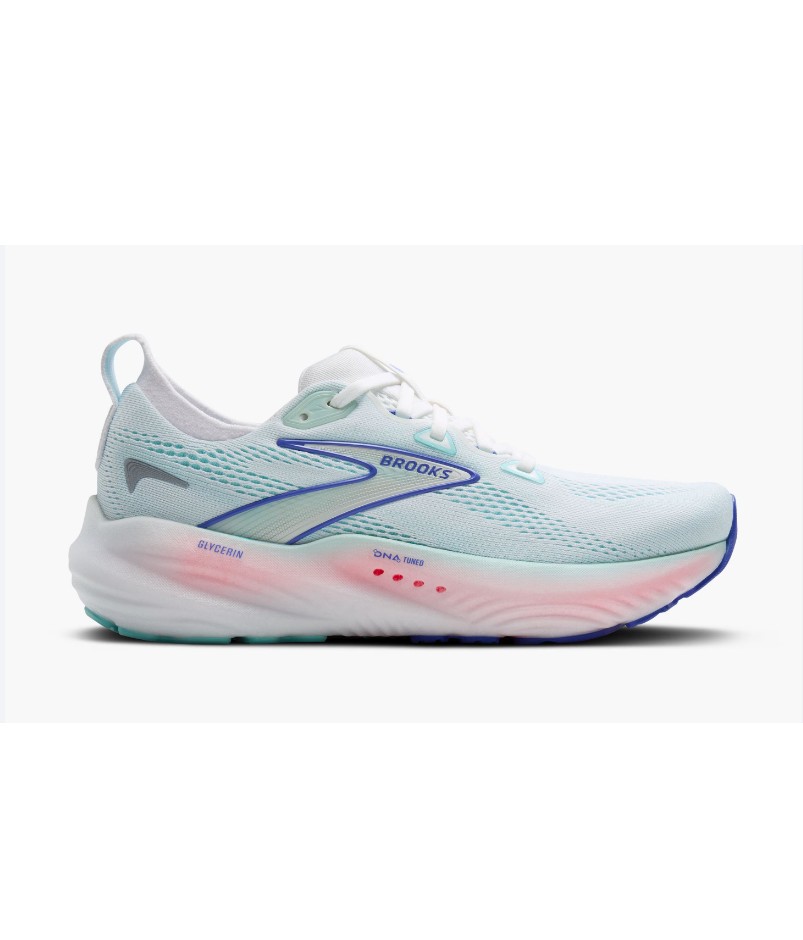
A bouncy, supportive shoe that knocks it out of the park for lightweight cushioning. The range of widths and the generous toe box make this a great shoe for every type of foot—for me, it was a Cinderella story!
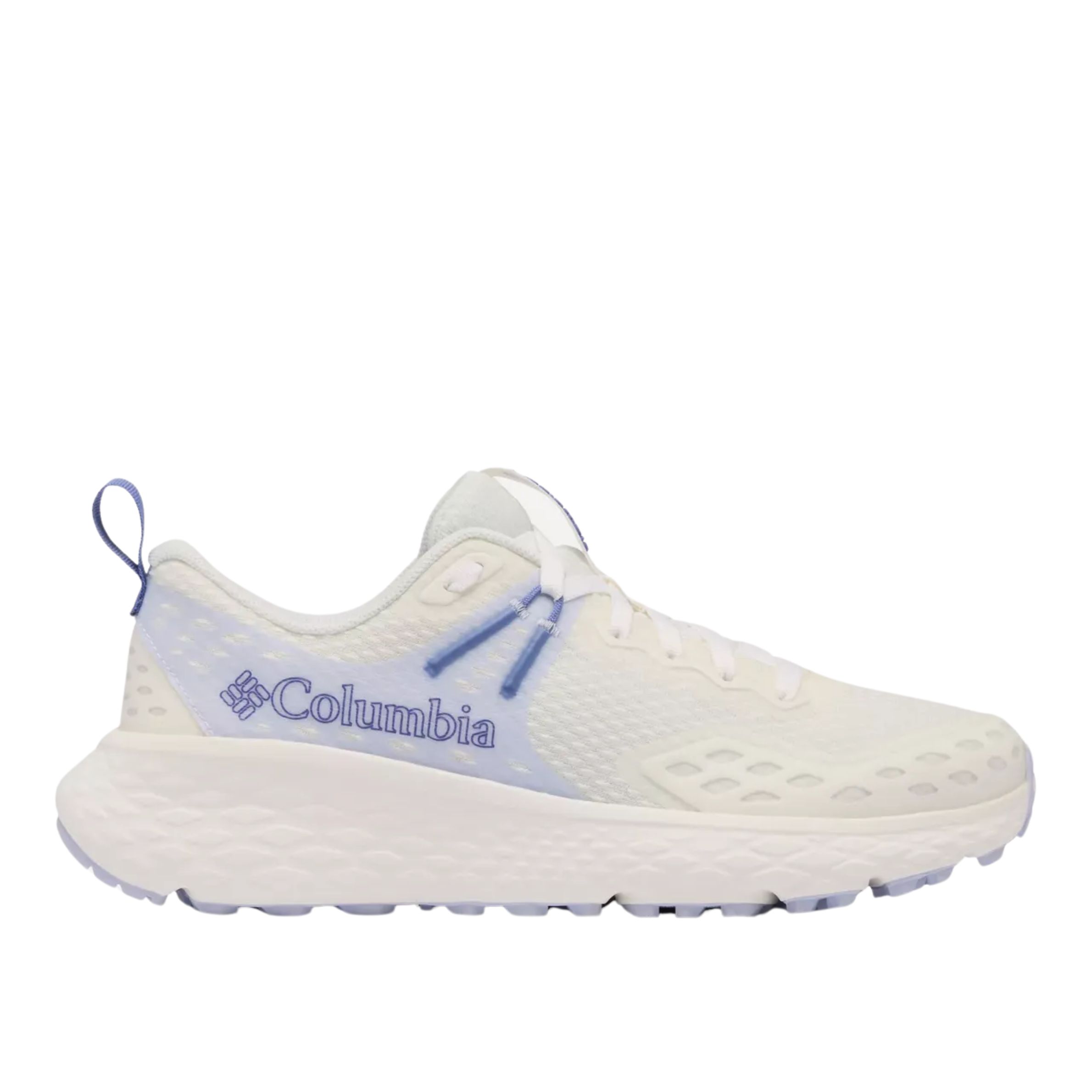
This is a great all-rounder, which is sturdy enough to support you on rugged terrain but also has ample cushioning to keep you comfortable on hard surfaces like concrete
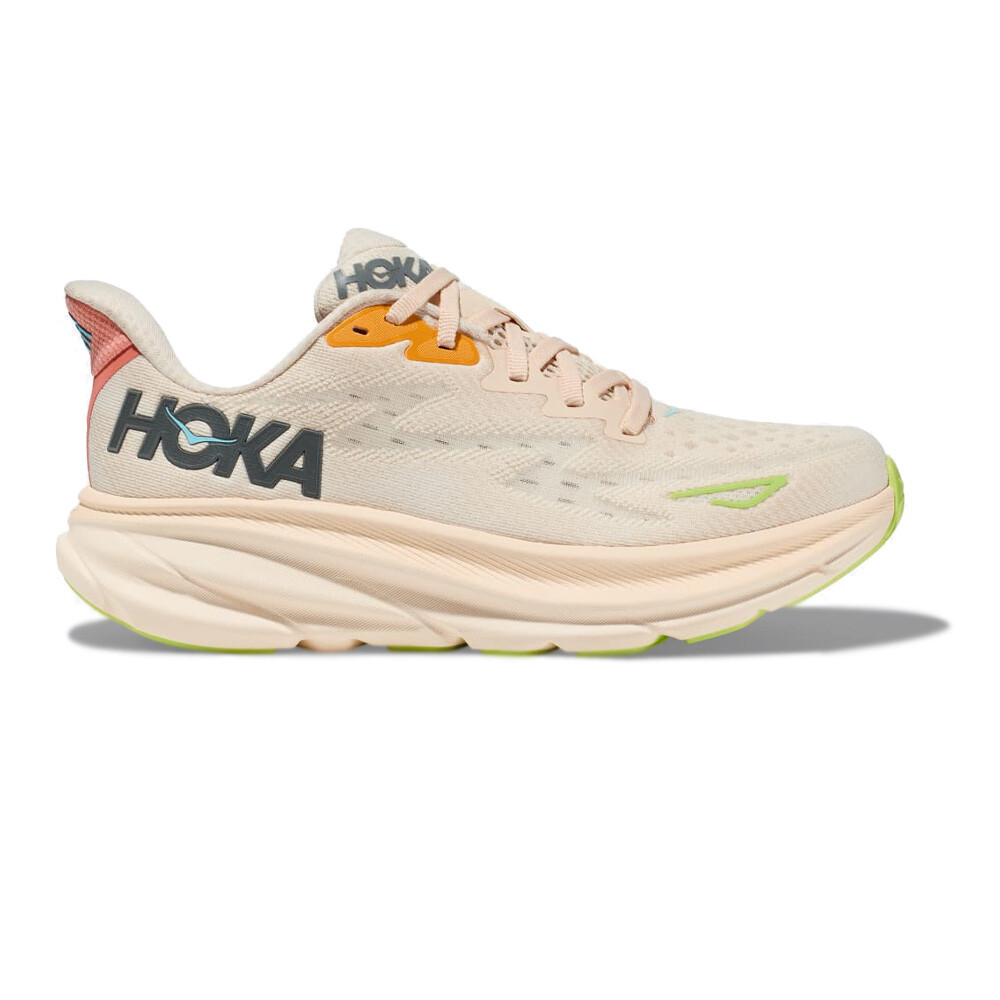
The Clifton 9 is a bouncy shoe with a lot of cushioning. If you are looking for a lighter, softer alternative to the Bondi 8, the Clifton 9 is a great option and ideal for concrete walks.
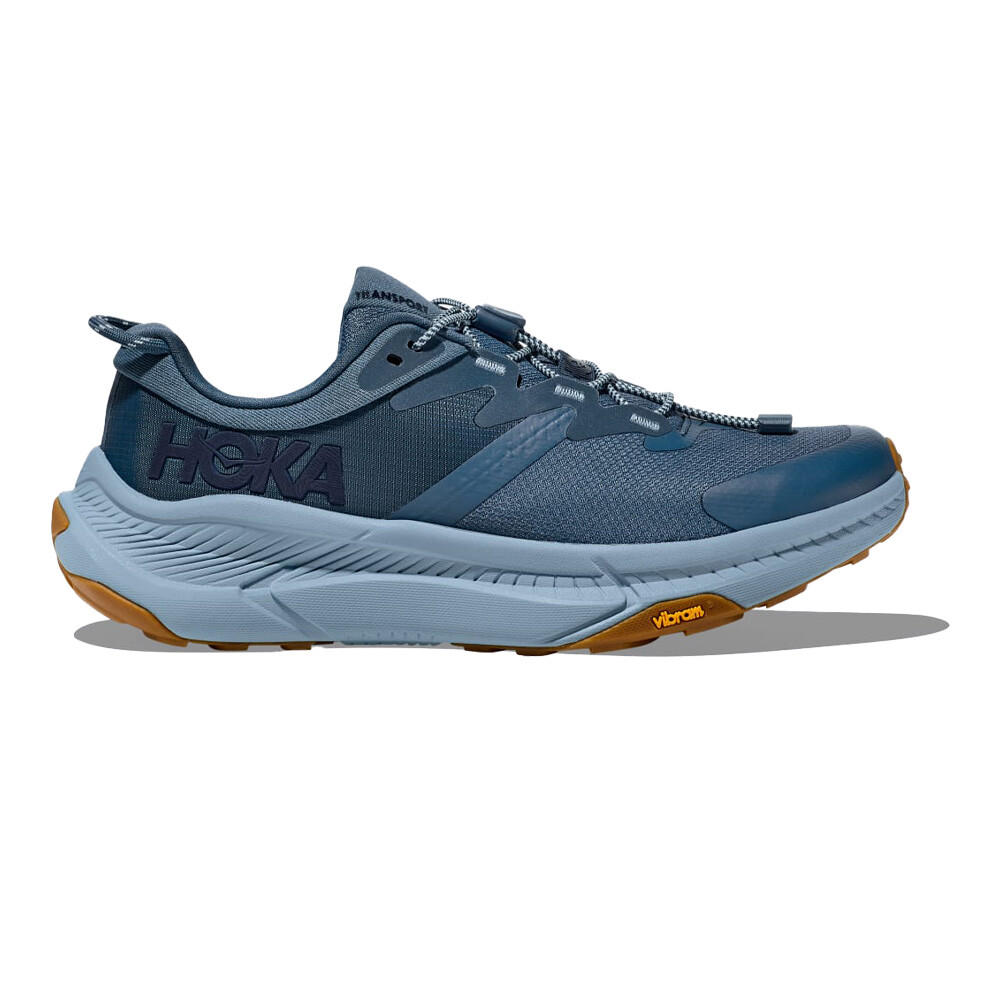
The Hoka Transport is a great everyday shoe that can be worn anywhere. The lace-free toggle option makes them easy to slip on and its firm, comfortable sole will suit most walks.
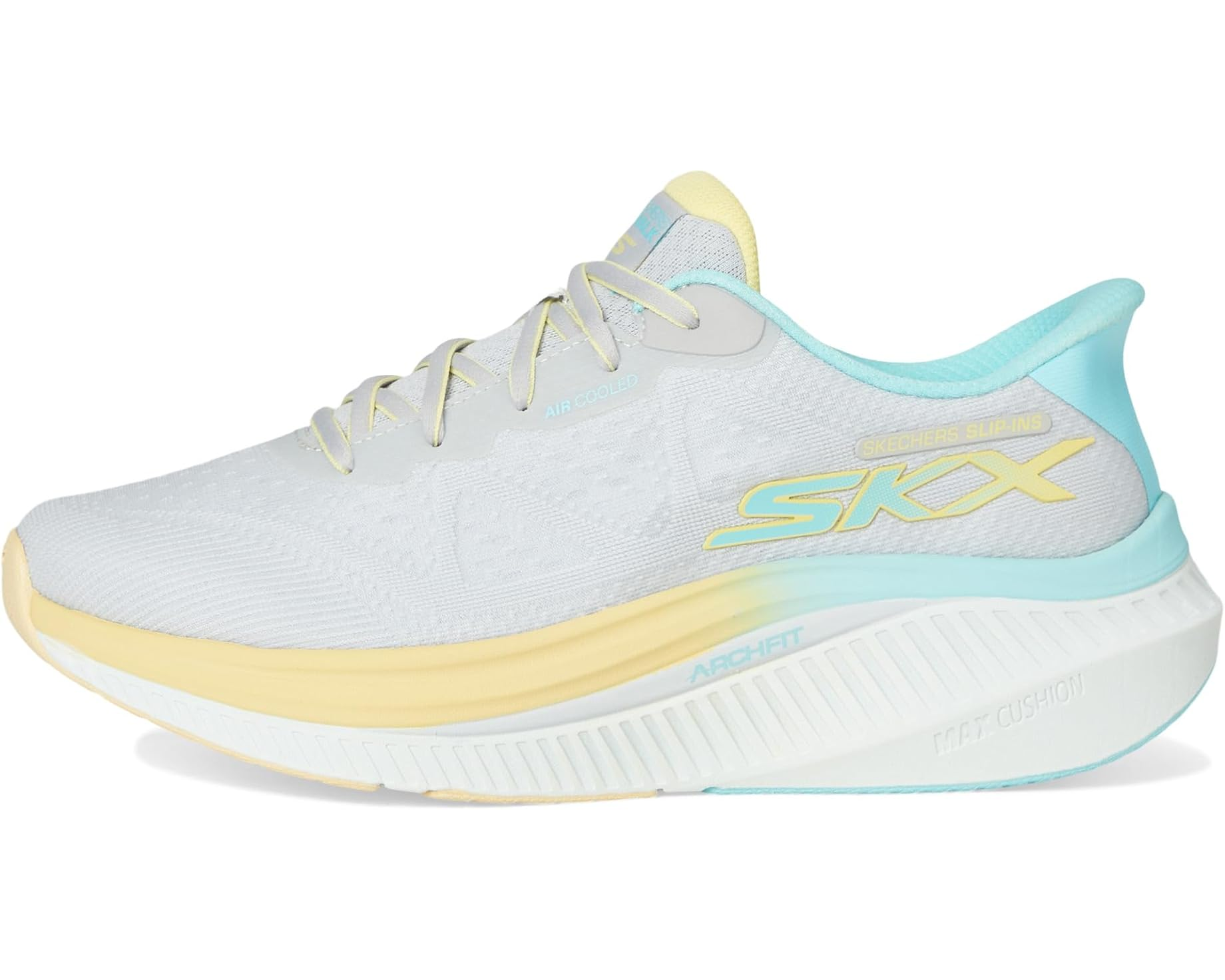
With lots of room to wiggle your toes, these are a great option if you have wide feet or need extra space in the toe box for bunions
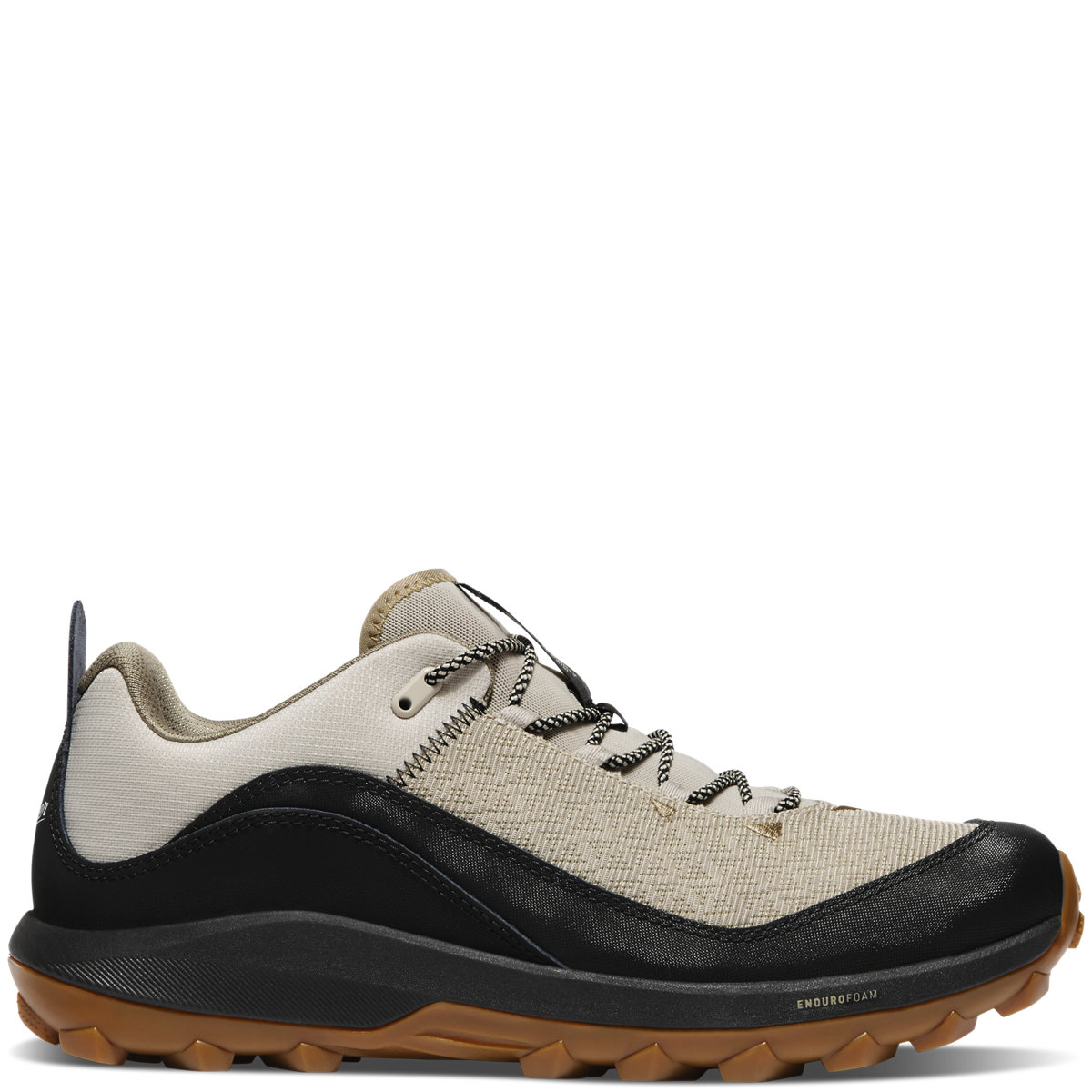
A comfortable low-rise hiking shoe that will keep you comfortable over uneven terrain. I tested the Vibram outsole on slick pavements, slippery mud and ice and the it never failed to grip.
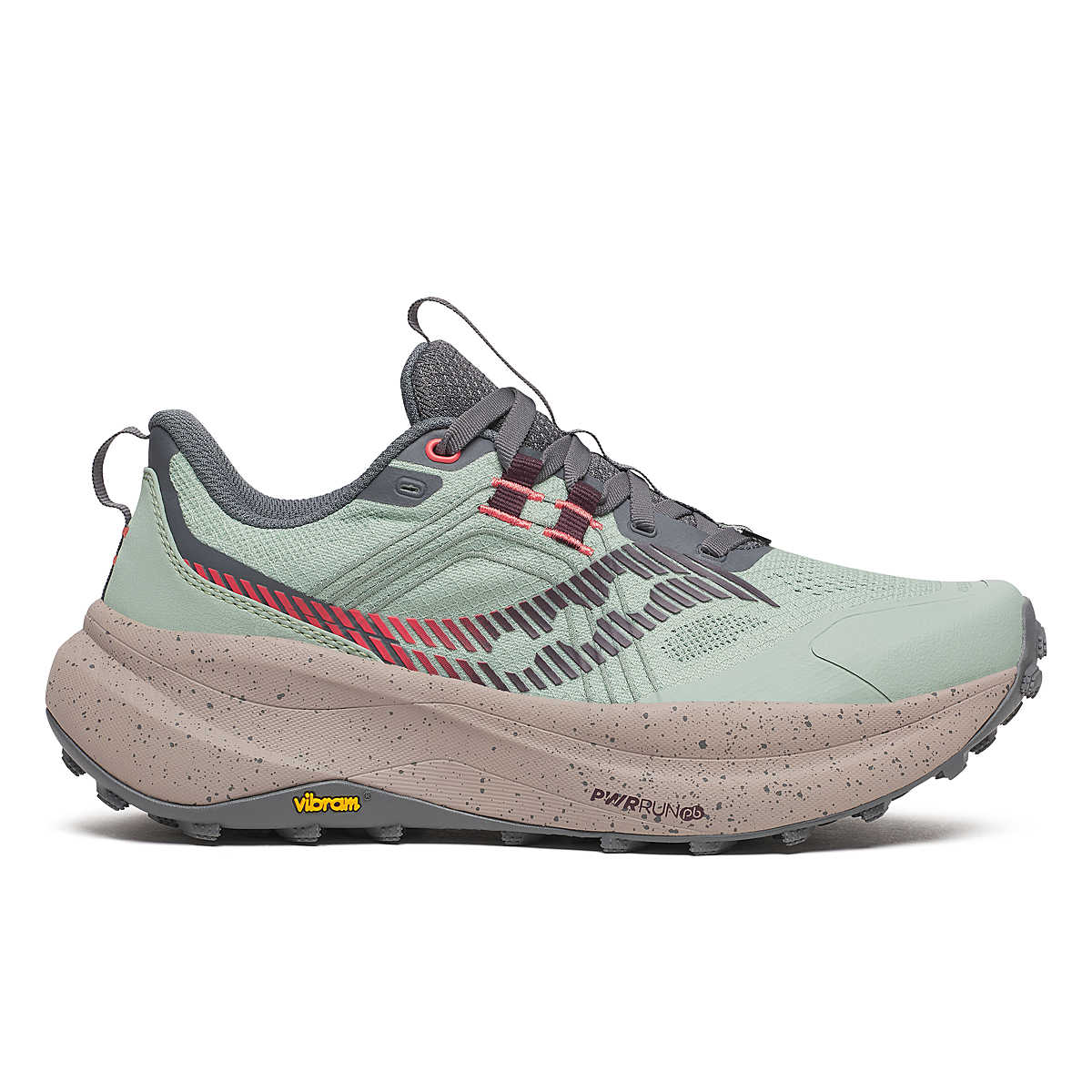
This is a lightweight trail shoe designed for running, but it’s perfect for trail walking too. The protective upper and supportive collar keep your feet safe and secure when walking off-road and the grippy soles can tackle a variety of terrains.
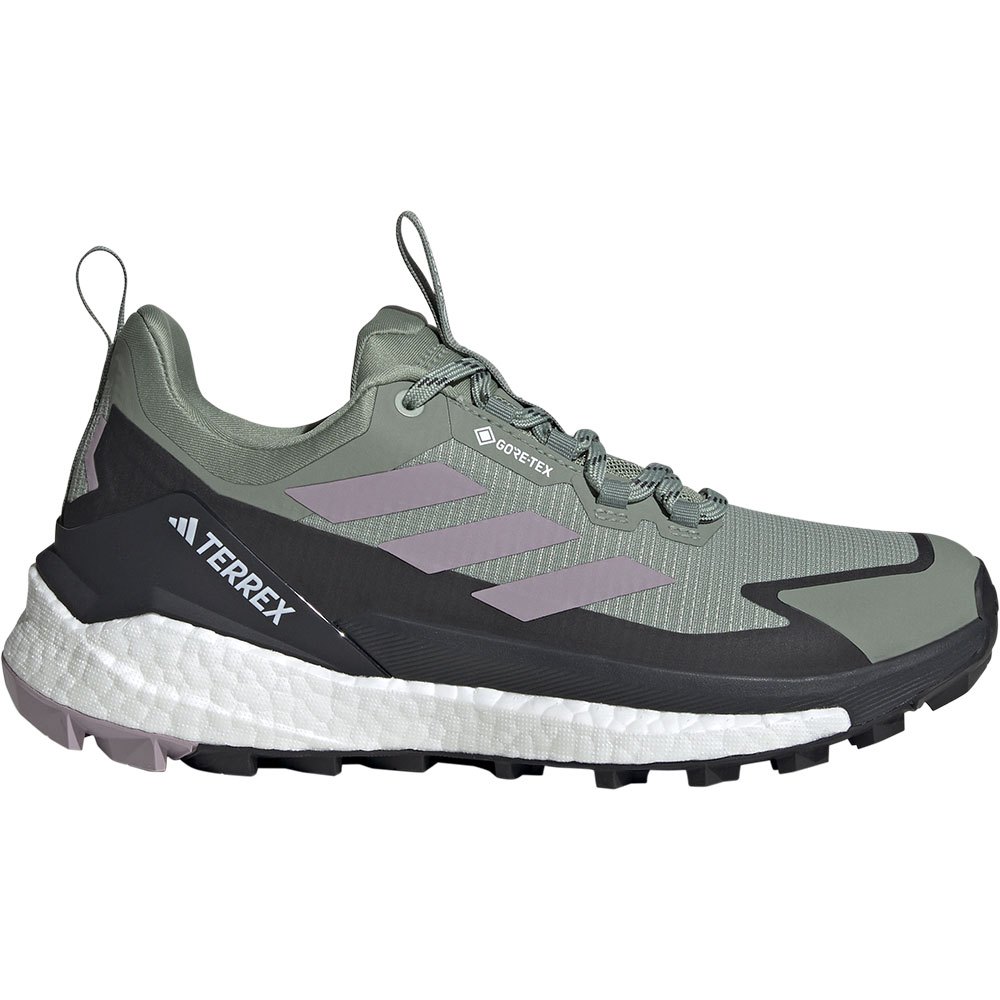
The only truly waterproof shoe I’ve tested thus far, my pair of Adidas Terrex Free Hiker Low have replaced my Wellington boots on rainy days, because it can withstand a dip in a puddle without getting saturated with water.
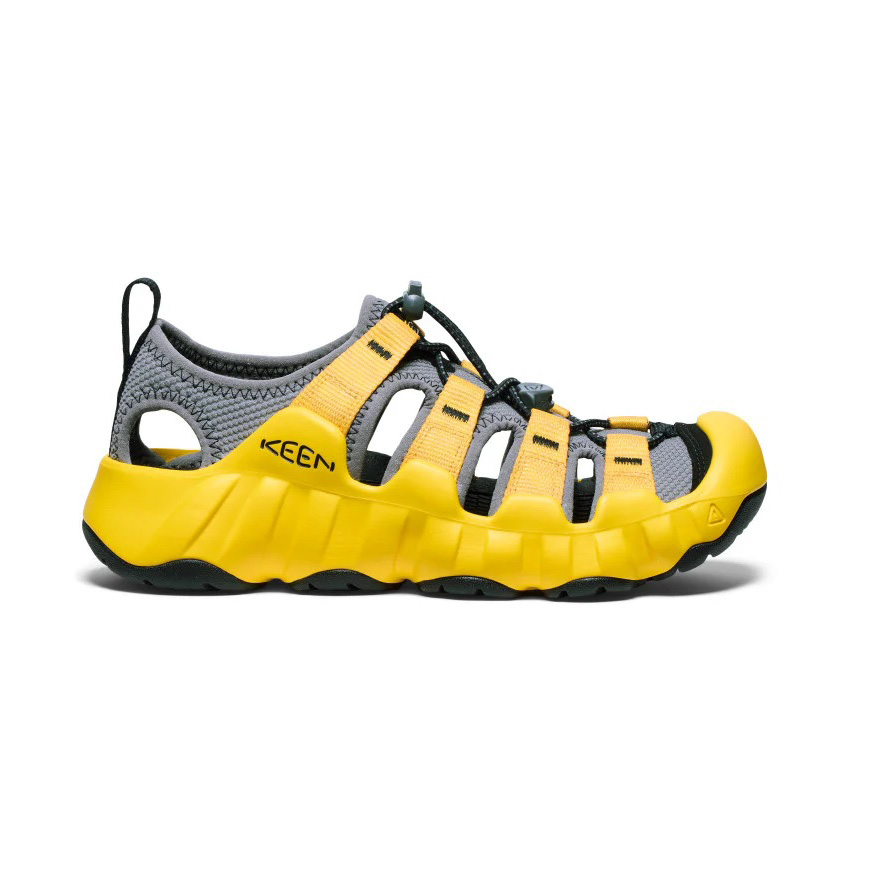
This versatile sandal is secure on the foot and has a cushioned sole suitable for long walk. It’s a great summer walking shoe if the aesthetic is to your taste.
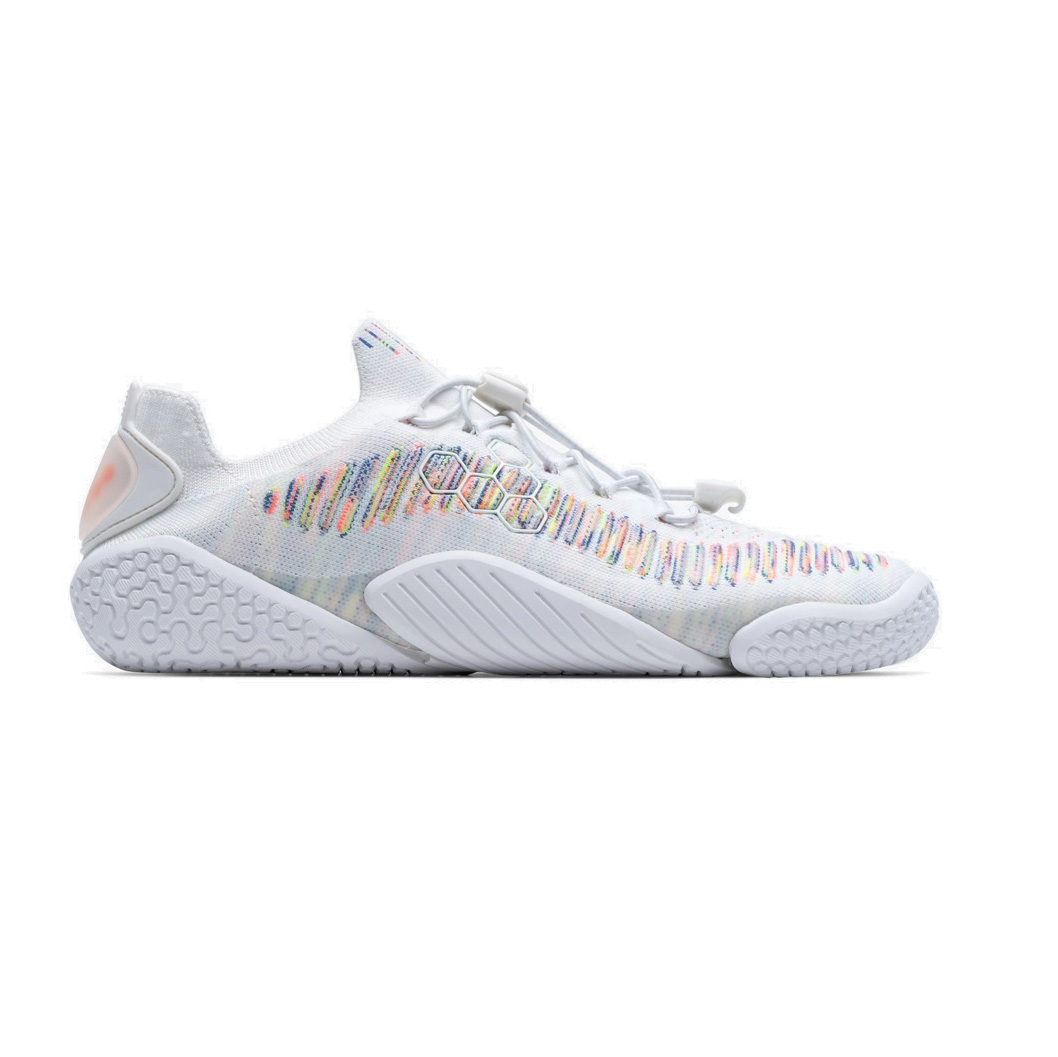
The wafer-thin sole on this sneaker will allow your foot to move as it would without shoes, while still offering a good layer of protection
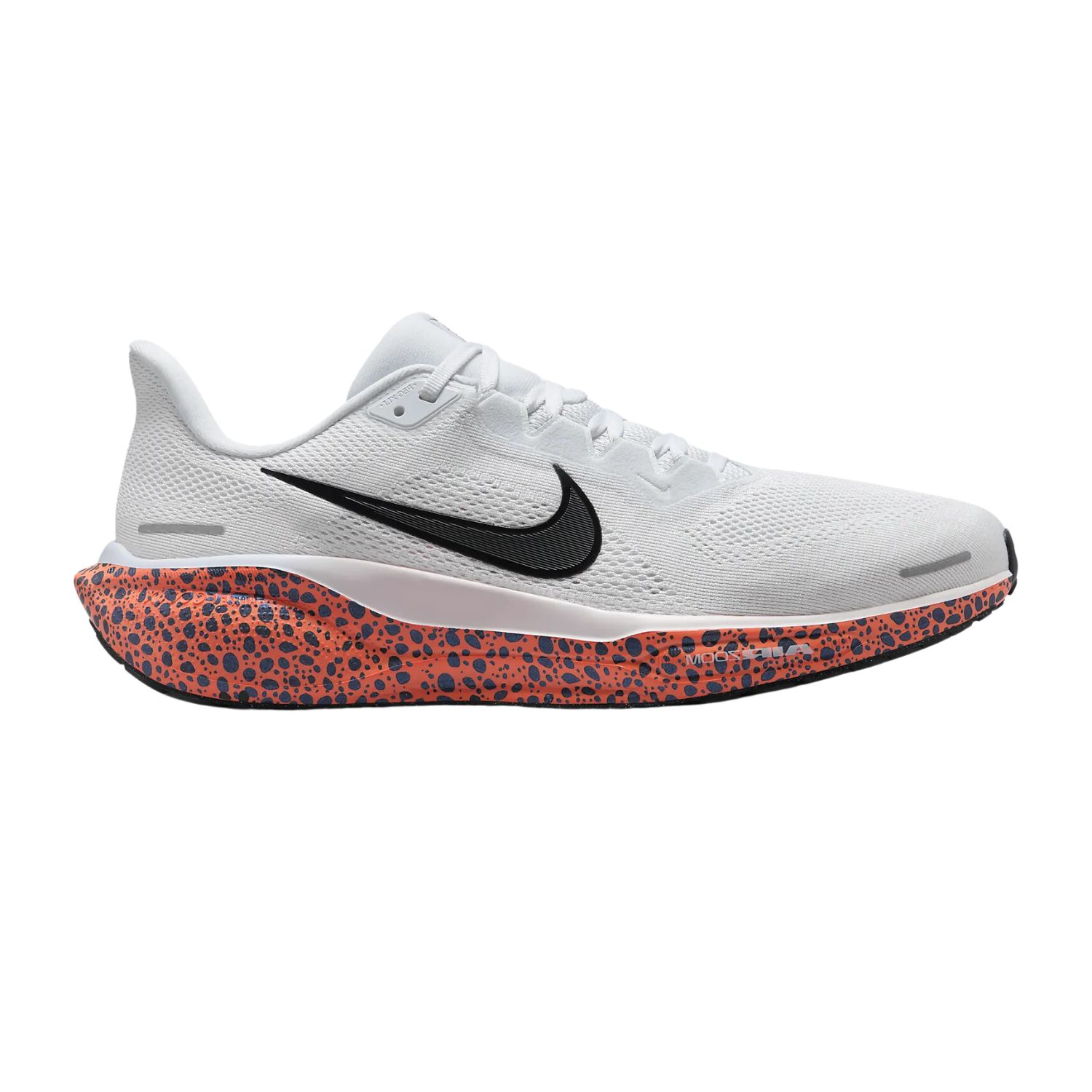
The latest iteration of the Pegasus model offers no major upgrades from the previous generation but it remains the best Nike walking shoe I've tested, offering plenty of grip and a good amount of spring.
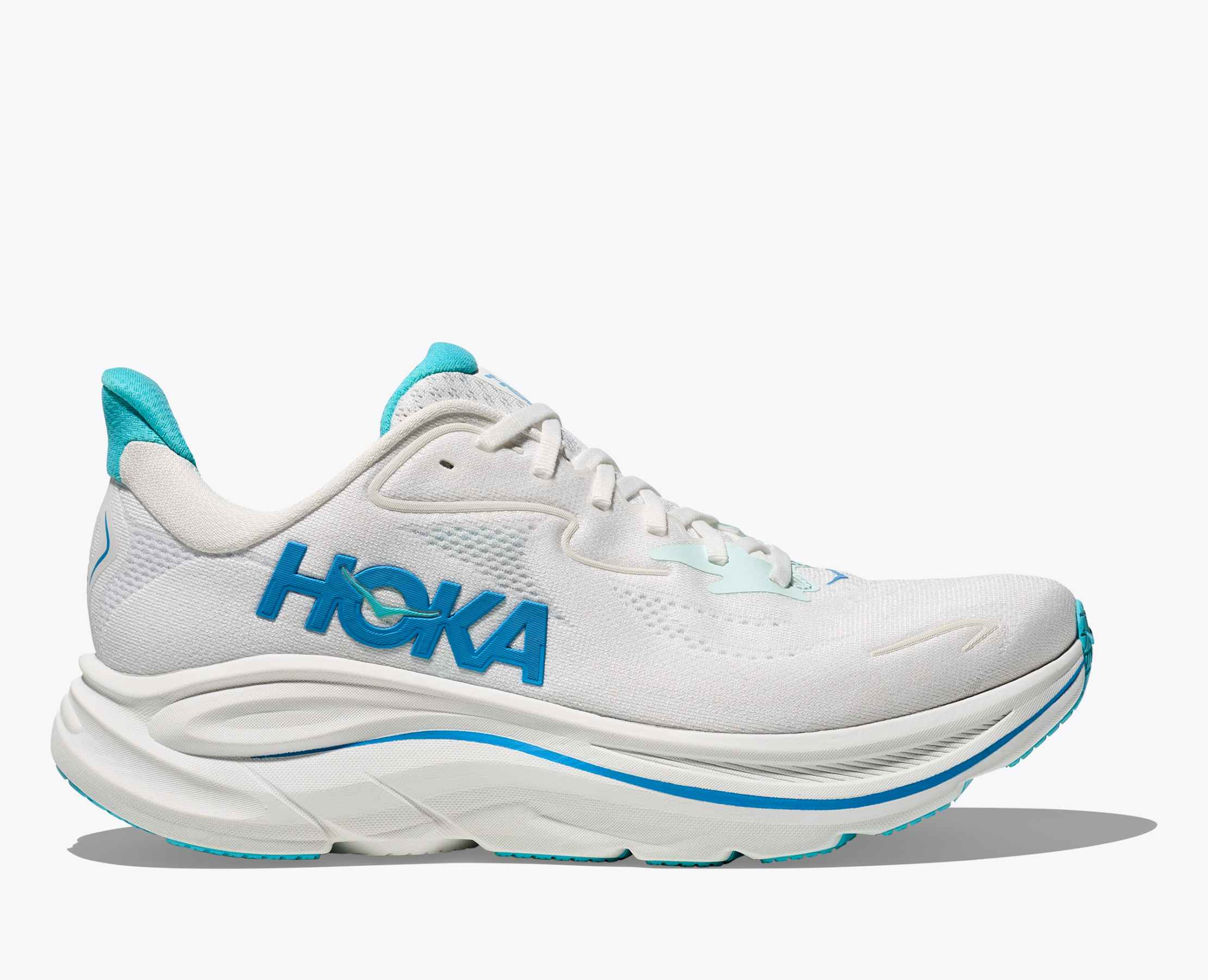
The best Hoka shoe I’ve ever tested! The Clifton 10 improves on the finest points of the Clifton 9, and is comfortable from the very first step. Well cushioned, lightweight and well-ventilated—making this a great shoe for long walks, and on unforgiving hard surfaces.
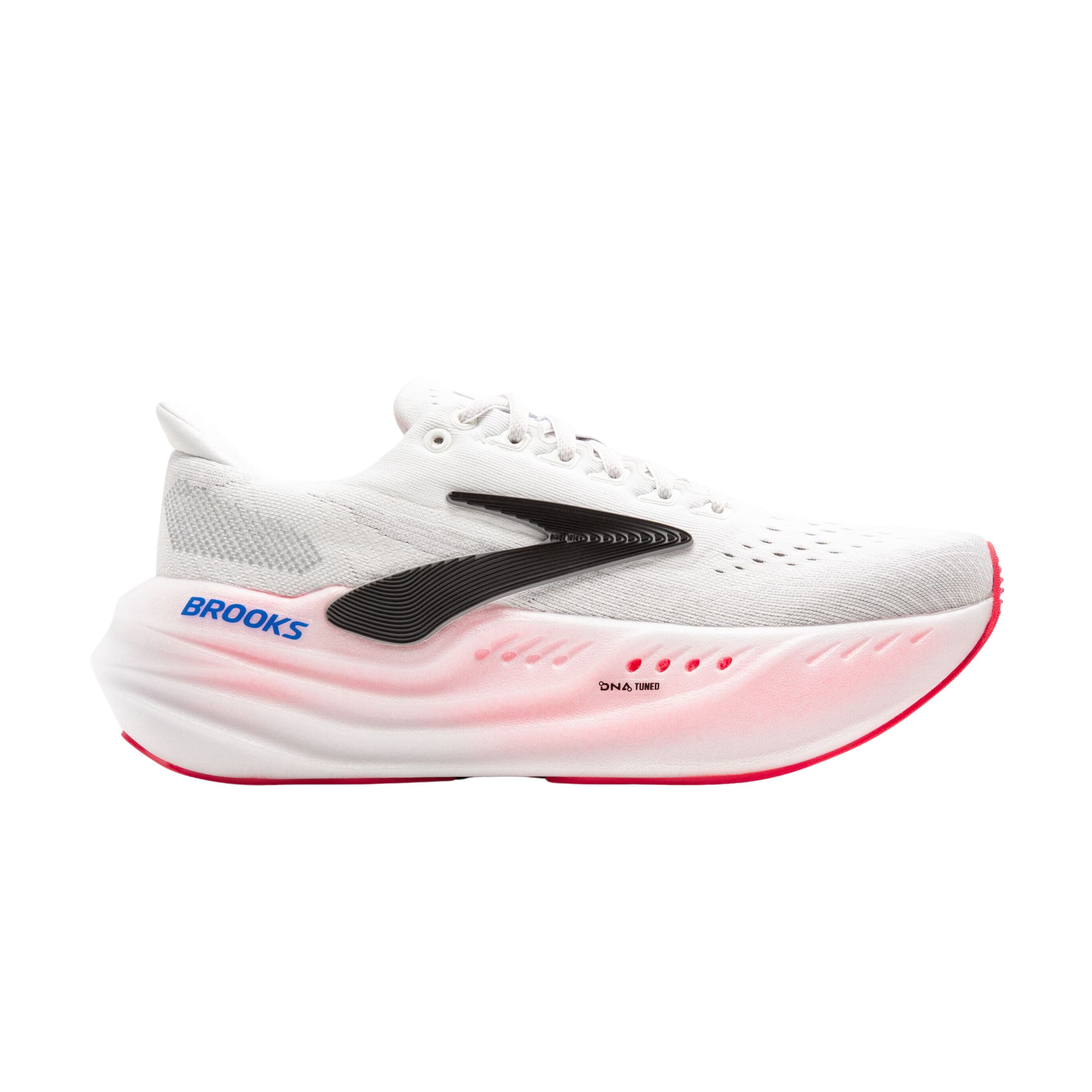
The Brooks Glycerin Max is a comfortable, cushioned walking shoe with tons of stacking to protect your foot. I recommend this shoe for those who spend a lot of time walking on hard surfaces or who work on their feet all day.
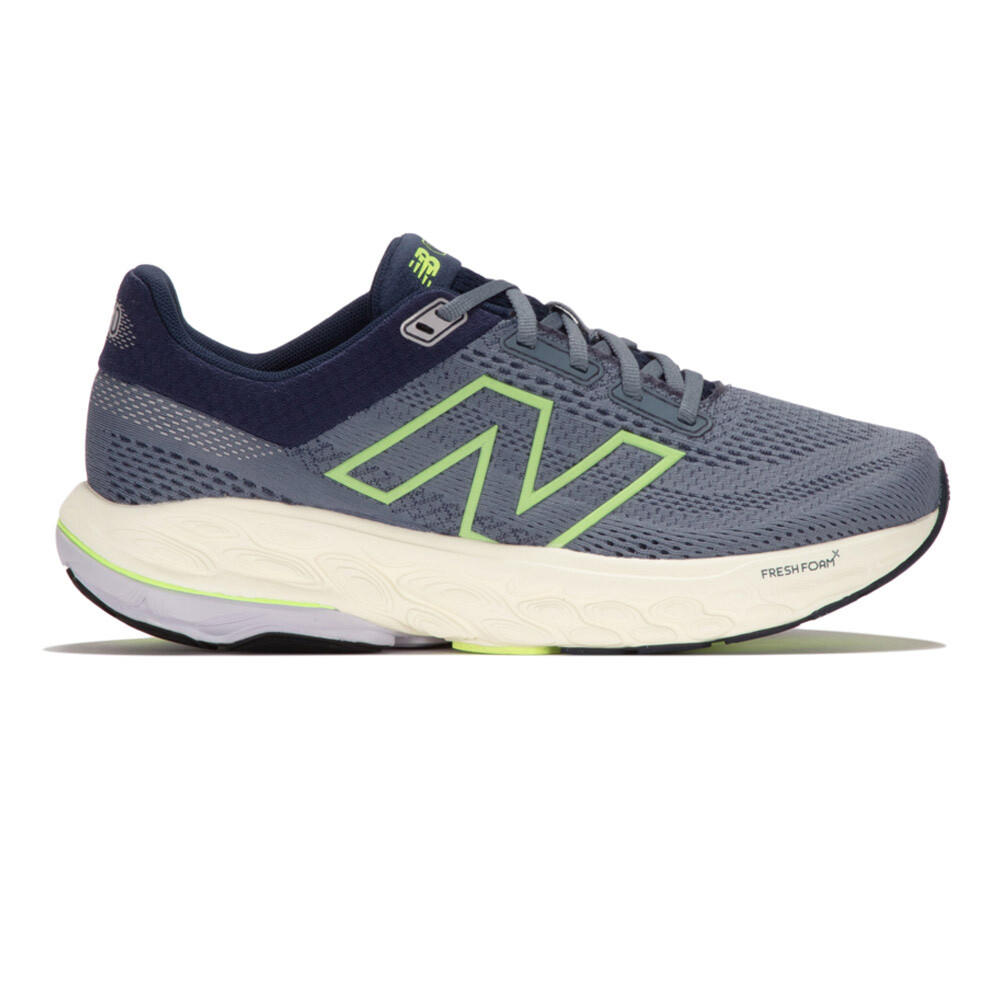
If New Balance is your brand, the Fresh Foam X 860v14 is one of the most comfortable shoes I’ve tested. With great cushioning and a chunky sole, I found myself comfortable all day, although they were a little too wide for my feet.

The Aero Slip-in is an excellent shoe and the best I've tested this year from Skechers. It features a convenient slip-on design and a high collar, similar to the Hoka Clifton 9.
The best shoes for walking you can get right now
Best overall
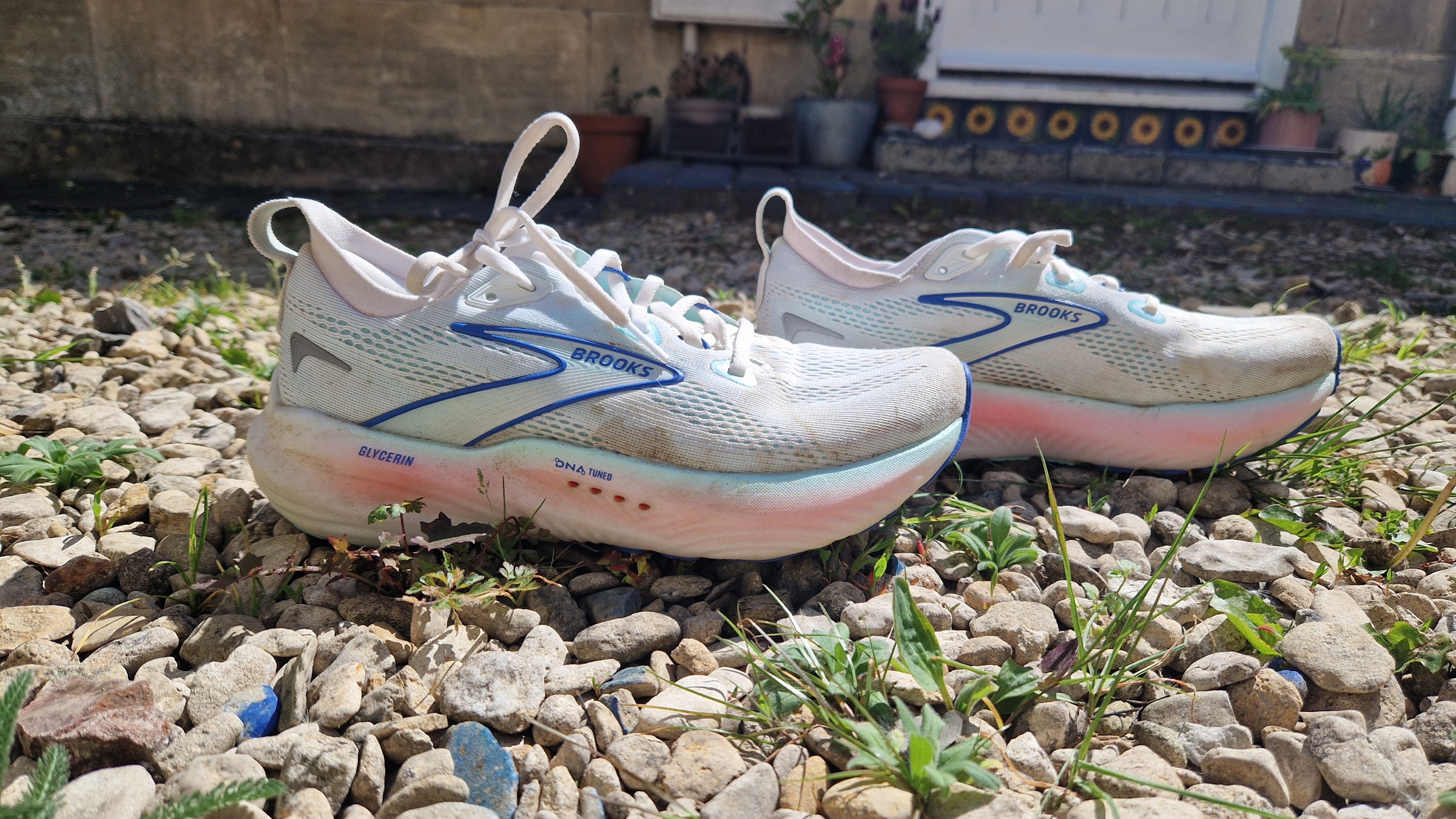
1. Brooks Glycerin 22
Our expert review:
Specifications
Reasons to buy
Reasons to avoid
Buy it if
✅ You want comfort: The Brooks Glycerin 22 ticks this box and then some. The upper is plush and the midsole is well-cushioned and bouncy.
✅You get hot feet: The upper is wonderfully well-ventilated. Even on hotter days, I felt zero discomfort.
Don't buy it if
❌You want a waterproof shoe: These are great shoes on sunny days, due to the ventilation, but all that airflow comes at the expense of waterproofing.
❌You’re on a budget: At $165, it’s not the cheapest shoe in the guide, nor is it the most expensive. I recommend the Skechers Max Cushioning Elite 2 instead if you’re after a comfy shoe but you’re on a tight budget.
Cushioning + support: The Glycerin 22 has found the sweet spot of cushioning and stability. It’s got more bouncy midsole foam than its predecessor, with a stack height of 38mm compared with 36mm. But it’s not got as much as my previous top pick, the Glycerin Max, which had more than 40mm of foam at the heel—that was so high it could make some people feel unstable.
The midsole under the forefoot was broader than I’m used and it users a different type of foam that is meant to give a springier toe off. I found this particularly comfortable as it adds a different element of cushioning, making the ride even bouncier—a big win in my book.
Design + features: The Brooks Glycerin 22 has an elasticated collar that hugs the ankle and prevents slipping. The upper is breathable and was cool even on longer walks, I couldn’t feel my feet getting sweaty until I got home and took the shoes off.
I’ve recently developed a mild bunion, and I find that some of the shoes I’ve been testing feel like they are squishing my toes together, and in turn, causing pain. I had no such issue with the Glycerin 22. The toe box is generous, leaving plenty of room for toes to splay. If you do have wide feet, the Brooks Glycerin 22 range comes in three width options.
Materials + durability: The sole was impressively durable, and there were no scuffs or nibbles after my usual 40,000-step testing period on hard pavements. I’ve previously had issues with slipping when wearing Brooks shoes—particularly the Ghost range—but the Glycerin 22 grips well, and the multi-directional ridges on the sole kept me steady even when pivoting.
The upper is soft and lightweight, the tongue is well-padded, and the insole is smooth and comfortable.
Best on a budget
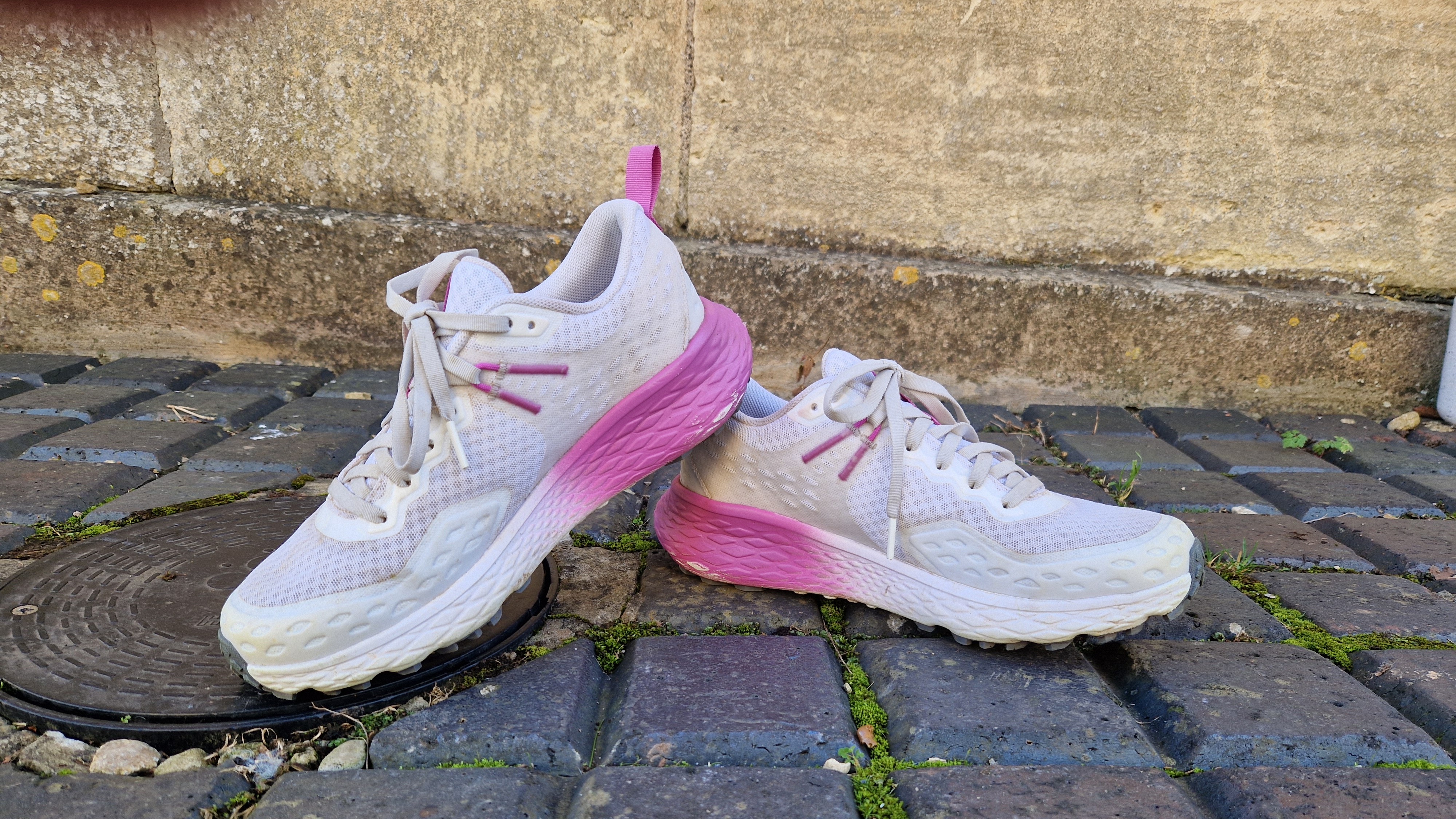
2. Columbia Konos TRS
Our expert review:
Specifications
Reasons to buy
Reasons to avoid
Buy it if
✅ You want an affordable shoe: These shoes retail for $100, but can often be found on sale for $60 or less. For such a high-quality shoe, I think this is a steal.
✅You want something lightweight: They only weigh 8.4 oz / 240 g per women’s shoe, which is not bad for a trail shoe.
Don't buy it if
❌You want a waterproof shoe: I tried walking through some long dewy grass and immediately got wet socks: best to stay on dry surfaces with these.
Cushioning + support: Some of the technical trail shoes I’ve tested have been remarkably hard but these were plush and bouncy. They’re not as soft as my favorites (the Brooks Glycerin Max) but they were still comfortable after hours of walking over concrete pavements and hills.
They also feature one of my favorite things: a well-stacked sole. They don’t reach the lofty heights of other shoes in this guide but have a 27.5 mm heel height, 17.5 mm toe height and a heel-to-toe drop of 10 mm. This leaves a lot of room for foam in the midsole, which explains why they’re so bouncy.
Design + features: These are grippy shoes, designed to take you from urban environments to hiking trails, so they work well on both slippery wet pavements and uneven terrain. I tested the version of the shoe with Outdry technology, which wasn’t fully waterproof but held up in light rain—as long as you don’t walk directly through a puddle you should be ok.
There’s a tab on both the heel and the tongue of the shoe, which makes them easy to pull on. There’s also a bump on the rear of the heel to help you kick them off, which I found handy.
Materials + durability: These shoes still look and feel great after six months of testing. The outsole is particularly durable. The lugs (the raised rubber sections on the outsole) show a bit of scuffing but their fundamental structure is intact.
On the downside, the white pair I tested picked up stains quickly, which are impossible to remove (even after a run in the washing machine).
Best for concrete

3. Hoka Clifton 9
Our expert review:
Specifications
Reasons to buy
Reasons to avoid
Buy it if
✅ You’re looking for a light shoe: These shoes weigh just 8.7oz (men) and 7.3oz (women), so you’ll feel light on your feet.
✅ You want a flexible shoe: The sole on this shoe flexes with your foot and the upper moves freely, which is great if you need a reactive sneaker.
Don't buy it if
❌ You want a waterproof shoe: If you wear these in a heavy downpour, you will get wet socks. They are well-ventilated, so better suited to summer walks.
Cushioning + support: These are light, comfortable shoes with a stacked midsole providing lots of pillowy cushioning. While the Hoka Bondi 8s technically have more cushioning stacked underfoot, those shoes are slightly heavier and the cushioning feels denser. The Clifton 9s are lightweight and the support is softer so you ‘sink’ into it, which feels delightful when you’re on your feet all day or doing long-distance walks on concrete.
I often struggle with pinching or rubbing on the back of my heel but the Hoka Cliftons were incredibly comfortable from the moment I put them on. The high back offers good support around the bottom of the Achilles tendon, which I’ve not found in many other shoes. There’s no pull tab on the shoe, but I found it easy to grab onto the high backs and slip my foot in.
I also found that the Hoka Clifton 9s offer excellent energy return with each step, making their ride bouncy and comfortable. The upper is soft and flexible, hugging the foot gently.
Design + features: The Hoka Clifton is a lightweight shoe, with plenty of flexibility in the sole and upper, allowing the shoes to move with your feet. This is ideal if you’re on your feet all day or doing long-distance walks on concrete, as they have ample support and cushioning but don’t weigh your feet down.
They come in a wide variety of colors and offer both regular and wide-fit options.
Materials + durability: These shoes were excellent in hot weather, keeping my feet cool on hot and sweaty 10km walks. However, the breathable mesh upper isn’t waterproof, so they’re not ideal for rainy days.
While the sole is not as chunky as the Bondi 8, it still offers a thick layer of cushioning, so you’ll feel supported even on hard surfaces.
I have tested six Hoka shoes in total, clocking in 240,000 steps and 45 hours with the brand.
Best slip-on
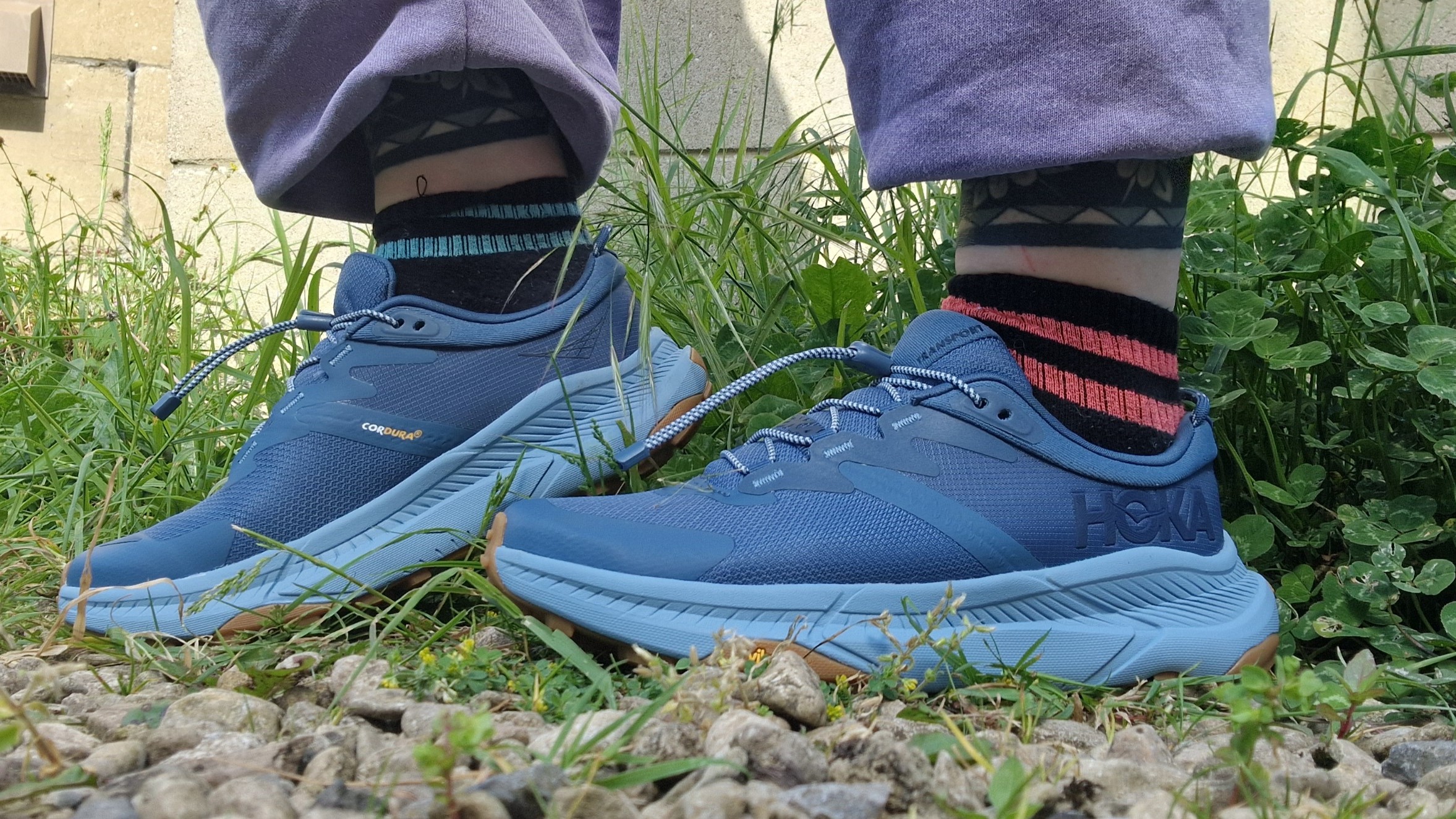
4. Hoka Transport
Our expert review:
Specifications
Reasons to buy
Reasons to avoid
Buy it if
✅You’re looking for a multipurpose shoe: I used this shoe for dog walks, city strolls, short hikes and casual outings. They’re perfect if you want to do lots of different activities but don’t want to buy multiple shoes.
✅You want an accessible fastening: The slip-on design is useful if you have limited mobility. And unlike a lot of other slip-on models, you can actually tighten or loosen the fastening to suit your foot.
Don't buy it if
❌ You want a chunky sole: If you’re looking for a chunkier, softer sole, I would recommend the Hoka Bondi, which tops this guide as the best walking shoe overall.
Cushioning + support: The Hoka Transport is a great shoe, with a good amount of firm cushioning in the midsole. They aren’t quite as stacked as other Hokas I’ve tested, which means they don’t have the same energy return, but they’re still very comfortable.
You can use these sneakers for walking, running or hiking, as Hoka has designed them to work as a multipurpose shoe. I loved their versatility and used them on a variety of terrains.
Design + features : The lace-free toggle option on the shoe makes them easy to slip on and off, but there are some laces included if that’s your preference.
The upper is more rigid than some of the other shoes I’ve tested, but not so rigid as a hiking shoe. They are stylish enough to be worn as a sneaker, and comfortable enough to walk (or run) for five miles.
Materials + durability: These shoes are perfect for a stroll in the city. I found that the grippy soles handled wet concrete, wet grass and slippery shop floors well. The sole has ridges and bumps that make it resistant to slipping on low-traction surfaces.
The model is water-resistant but not waterproof, so it can be worn in mild wet weather conditions. The mesh is breathable and I didn’t find my feet getting sweaty, even when I walked long distances.
I have tested six Hoka shoes in total, clocking in 240,000 steps and 45 hours with the brand.
Best for wide feet
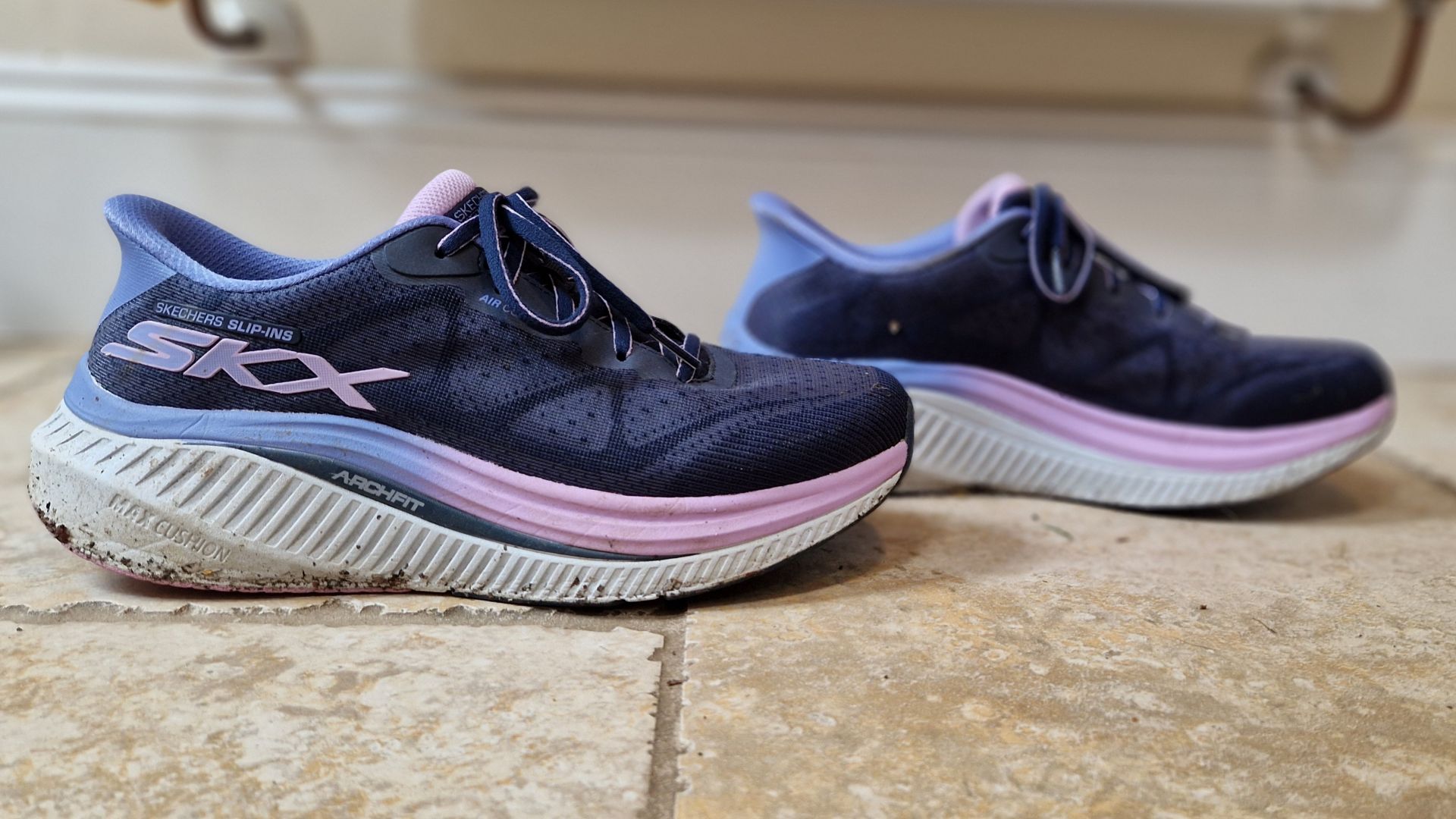
5. Skechers Slip-Ins: Go Walk Max Cushioning Arch Fit- Areena
Our expert review:
Specifications
Reasons to buy
Reasons to avoid
Buy it if
✅You’re on a budget: Skechers shoes tend to be budget-friendly, and these retail at $115, but I’ve seen them on sale for less than $70.
You need arch support: If you overpronate, you will need a little extra support under the arch of your foot to correct this.
Don't buy it if
❌ You’re unsteady on your feet: The lack of grip on the outsole might be a problem if you have balance issues.
❌You can’t tie laces: I found that although they slip on the feet easily, the laces still needed tying after. The Hoka Transport is a better slip-on shoe in this respect, as it has a toggle rather than laces.
Cushioning + support: The Arch Fit range from Skechers provides a little more arch support than your average shoe. This extra padding on the insole is great if you overpronate, which is when your feet tend to roll inward as you walk
I’ve recently developed a bunion and I’ve come to appreciate shoes that have some extra padding to prop my arch up, relieving pressure on the big toe joint.
I also now wear a toe spacer on one foot to keep my drifting big toe in the correct position, and this requires a little extra room in the toe box—a feature this shoe provides.
It’s a well-stacked sneaker, with a bouncy, plush sole that makes walking long distances feel easy. I tested them on and off-road, with several longer walks over hard asphalt surfaces, and they performed well, with no discomfort or compression.
Design + features: These are slip-in shoes, making them easy to put on hands-free. The tongue doesn’t ruck up when you slide your foot in. However, I only managed to slip them on hands-free when they were unlaced, so you still need to bend down to tie them up.
My one qualm with this shoe is that the sole isn’t particularly grippy. If you’re on a dry sidewalk, this isn’t much of an issue, but when I tested the sneaker on a rainy day I lost my footing on a slope and toppled over. Considering the slip-in feature appeals to those with limited mobility, this seems a significant flaw.
Materials + durability: This shoe has a lot of trademarks and jargon tied to it, with things like ULTRA FLIGHT® and HYPER ARC™ making it sound high-tech and fancy. The truth is, it is a high-quality shoe, with fairly standard material types for this price point.
The upper is flexible and soft, and the sole is wide and stable, made from a tough rubber that withstands wear. Other Skechers shoes I’ve tested (the Go Walk 7 in particular) haven’t aged very well, with the soles getting nibbles and debris stuck in them from day one, but this is not an issue with this model.
I have tested six Skechers shoes in total, clocking up 240,000 steps and 45 hours with the brand.
Best for grip
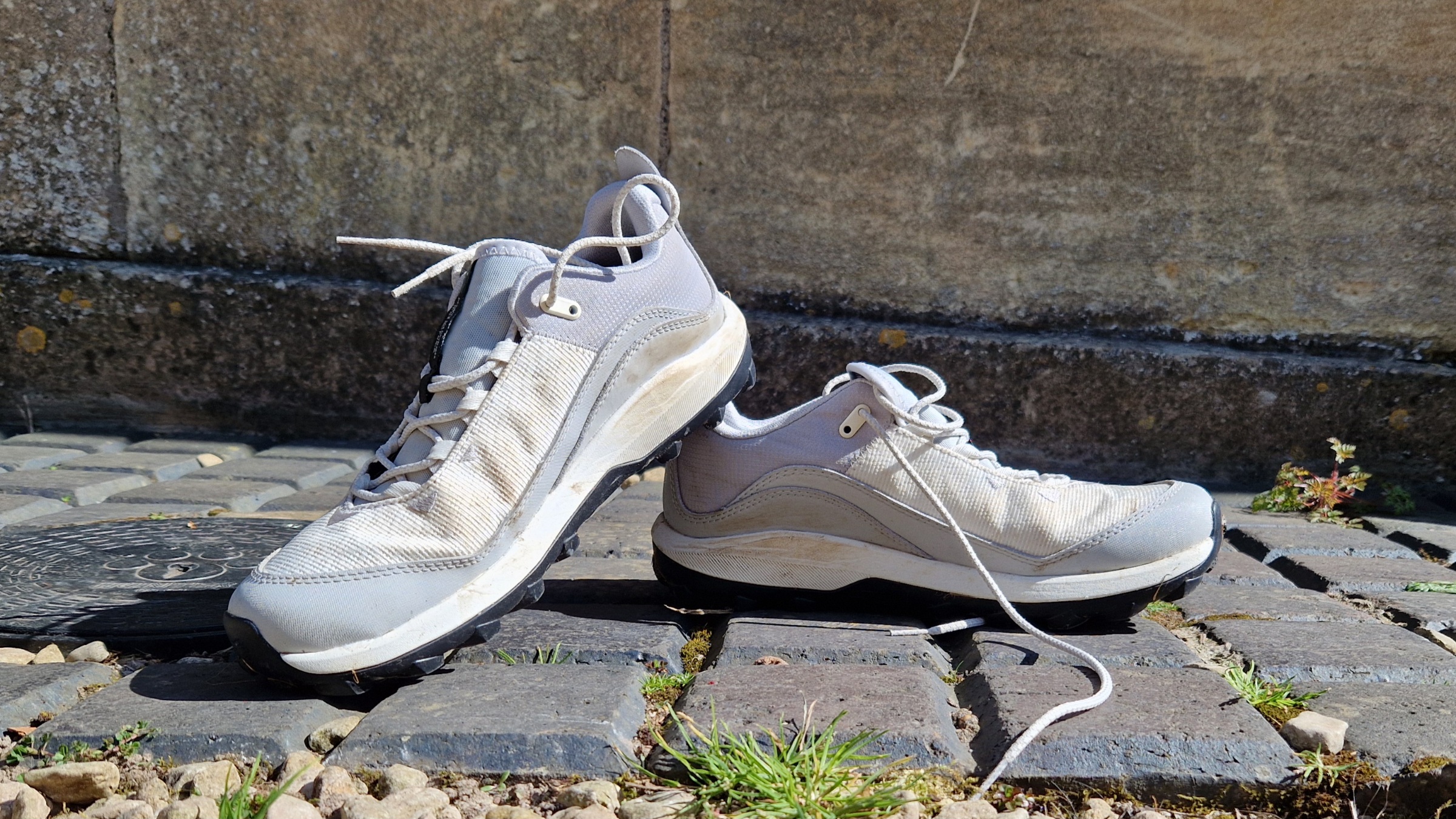
6. Danner N45
Our expert review:
Specifications
Reasons to buy
Reasons to avoid
Buy it if
✅ You go off-road a lot: If you walk mainly on concrete surfaces, this probably won’t be the best shoe in the guide for you. However, if you’re going on more rugged walks, this shoe will keep your foot comfortable.
✅You want a secure grip underfoot: The outsole is no joke. I did my best to slip over, taking my pair over frozen puddles, frosty grass and slick mud—and it just didn’t happen.
Don't buy it if
❌ You want a waterproof shoe: The shoe is water resistant, as the tougher midsole material comes up the sides, but not fully waterproof. I’d suggest the Adidas Terrex if you’re after something waterproof.
❌You’re on a budget: This shoe retails at $200 a pair, which is higher than most shoes in this guide. But I must say that the sole is worth it if you need some serious grip.
Cushioning + support: I mainly test shoes designed for road running, which tend to be very bouncy and well-cushioned, but as this is a trail shoe, the design has some other priorities. There is less cushioning than a road runner but the Danner N45 is more durable, and able to take on rougher and more variable terrain thanks to its sturdier build and grippy sole.
The shoe did cause some chafing on the ankle, as the upper material is quite stiff, which is a common issue I have with trail shoes. However, after a couple of longer walks, the shoe felt far more comfortable, as the structure had molded to fit my feet and bony ankles. The Danner N45 is now my go-to shoe for rural walks.
Design + features: The grip on this shoe is something else. The chunky lugs on the outsole (the raised bits of rubber on the bottom of the shoe) are well-distributed and shaped like a 'v'. This means they have multi-directional grip and kind find traction even on slippy surfaces like ice and muddy hills. While other shoes have similar designs, none have executed it as well as Danner.
The laces are easy to tighten and loosen, and once the shoe is done up, it doesn’t come undone again. You will need to undo the laces to remove the shoe though, as the collar is snug once the laces are done up.
Materials + durability: Trail shoes aren’t generally lightweight, and the Danner N45 weighs in at 22 oz per pair of men’s shoes, and 19 oz for the women’s shoes. The soles and upper are both really tough, with no signs of wear after my usual 40,000-step testing period. The midsection (including the tongue) is made from a lighter mesh material, which keeps your feet cool while you’re on the go—but it does also let water in if it’s raining.
The colorway of my Danner N45’s is ‘Ghost’, a pale off-white, so the shoe did pick up some marks and stains pretty quickly, but these were purely superficial.
Best for trail walks
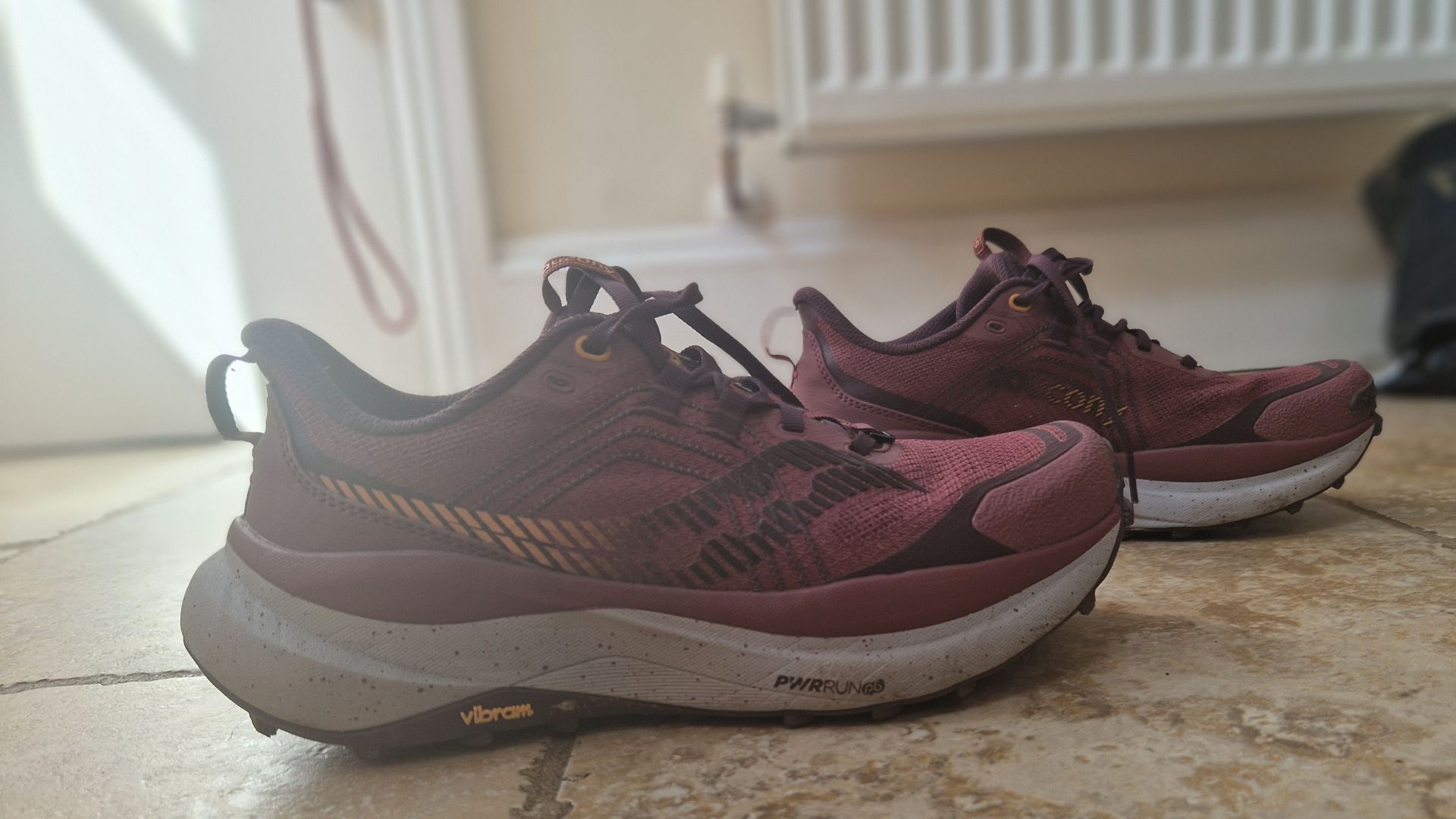
7. Saucony Xodus Ultra 4
Our expert review:
Specifications
Reasons to buy
Reasons to avoid
Buy it if
✅You walk off-road: The grippy sole and protective upper are perfect for rugged terrain.
✅You have narrow feet: I found the toe box a little snug, which is the only reason I didn’t give this shoe the full 5-star treatment.
Don't buy it if
❌You want a waterproof shoe: It is a splash-resistant shoe and can withstand some light rain, but if you want something truly waterproof, I’d go for the Adidas Terrex Free Hiker Low instead.
❌You’re on a budget: At $170 for a pair, they are expensive. However, it’s a durable soe and should last you a while, so it might be worth the investment.
Cushioning + support: The Xodus Ultra 4 is well supported for a trail shoe (and more cushioned than previous iterations), but it doesn’t have the same plush cushioning as shoes designed for road running, like the Brooks Glycerin or Hoka Bondi.
The sole is thick and absorbs the shock of each foot strike well, and the inner is soft and snug, preventing your foot from moving around inside.
Design + features: It took a couple of outings for this shoe to become comfortable and I had to loosen the laces as I found it pinched my toes. I have a bunion, so this is a common issue for me, but it indicates the shoe may be less suitable for wide feet.
It is pretty lightweight for a trail shoe, with the women’s shoe weighing 10.1 oz. This is similar to the previous “best trail shoe,” the Merrell Moab Speed 2, which weighed 9.7oz per shoe. Shoes designed for walking tend to be heavier than running shoes, like this one, which is why I favor running shoes for longer distances.
The upper has protective material extending high up the sides and over the toe, so you’re somewhat protected from rocks, thorns and uneven terrain. The grippy sole means that you’re unlikely to slip, but if you do, the collar is fairly stiff and offers some ankle support.
I liked the heel and toe pull tabs, which make the shoe easier to pull on, and the laces stayed secure throughout my testing.
Materials + durability: The sole is very durable, with a grip comparable to the Danner N45. It has similar V-shaped traction lugs, which I’ve found is the best design for grip.
The shoe is water-resistant but not waterproof. If you go wading through knee-high grass first thing in the morning, you might get soggy toes (ask me how I know).
Best for waterproofing
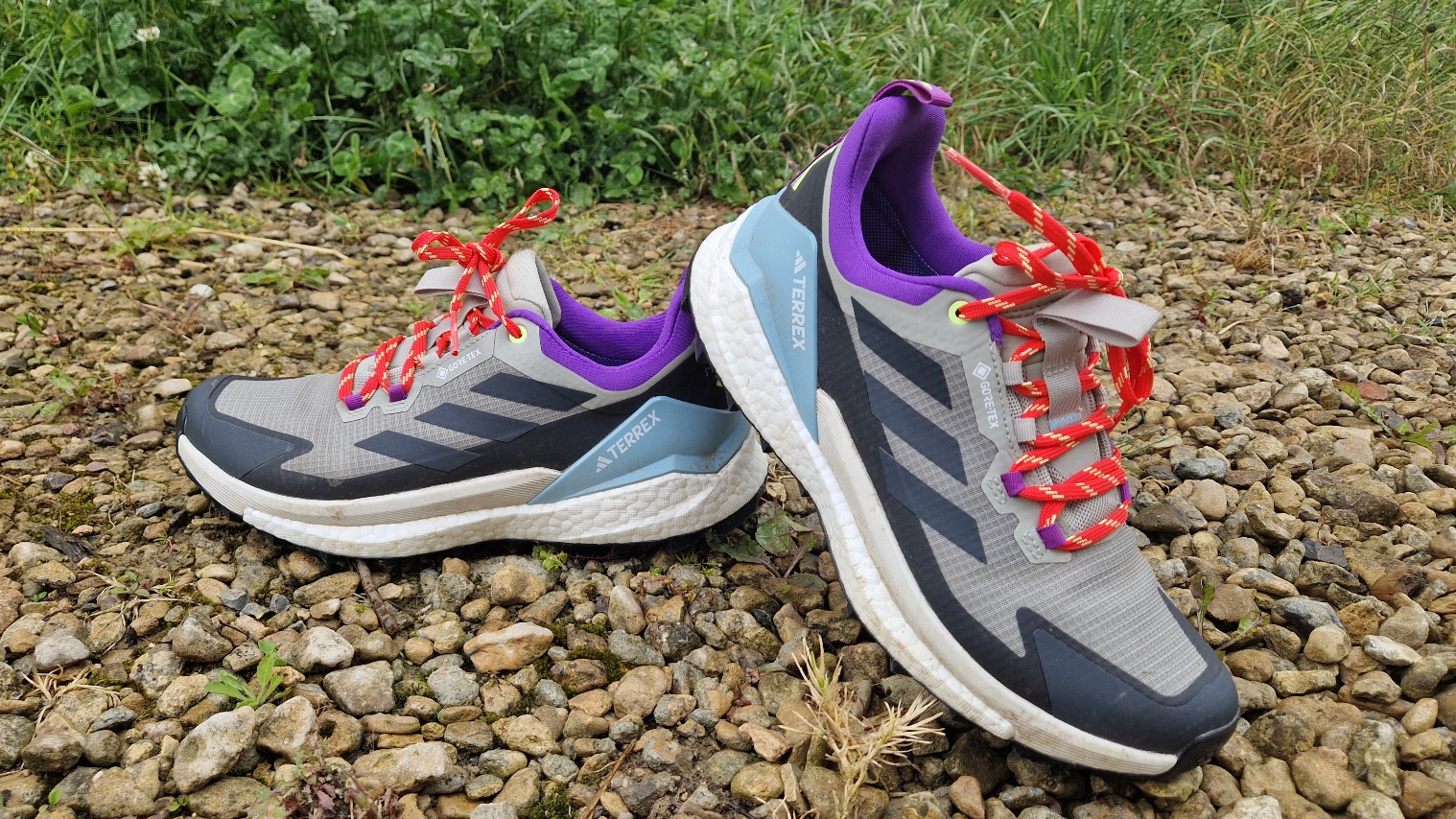
8. Adidas Terrex Free Hiker Low
Our expert review:
Specifications
Reasons to buy
Reasons to avoid
Buy it if
✅ You plan to walk in the rain: I have had issues with the grippiness of other shoes I’ve tested on wet concrete. The Adidas Terrex has no such problems, handling wet pavements and slippery, dew-covered grass with ease.
✅ You want a trail shoe: These are definitely a hiking shoe, with a sturdy sole that can make short work of uneven and rocky terrain. If you’re looking for a city walking companion, you might want to choose something more lightweight and bouncy.
Don't buy it if
❌You want a flexible sole: For those looking for plush comfort, these aren’t the right pair of shoes. They are designed for the trail and do not offer the flexibility of a running shoe or city walking shoe.
Cushioning + support: These are certainly firm shoes, bordering on stiff, but offer excellent support for those wanting to go off-road on potentially slippery or uneven terrain. The sole offers little bounce and energy return, but are deeply ridged to prevent slipping.
They are quite heavy shoes and I found that they took a few days to break in. They need to be worn with sports socks or hiking socks to avoid rubbing, particularly around the ankles and Achilles tendon.
Design + features : The laces need double knotting if you want to be certain they won’t come untied as they are quite slippery and can loosen over a long walk.
Most walking shoes have a grabbable loop on the heel, but these shoes also have a loop on the tongue, making them incredibly easy to put on. There is also a toe cap to protect your feet.
Materials + durability: I’ve tested many shoes that claim to be waterproof or water-resistant with a GORE-TEX element, but very few have been truly watertight. I was impressed when I clumsily put my foot in a puddle on the first day of testing these shoes and still had bone-dry socks afterwards.
These are very well-structured shoes and will support your feet over rocky terrain. While this is an asset on the trail, it can be a bit much when walking on concrete and I found the balls of my feet felt compressed after a long walk over flat pavements.
Best sandal
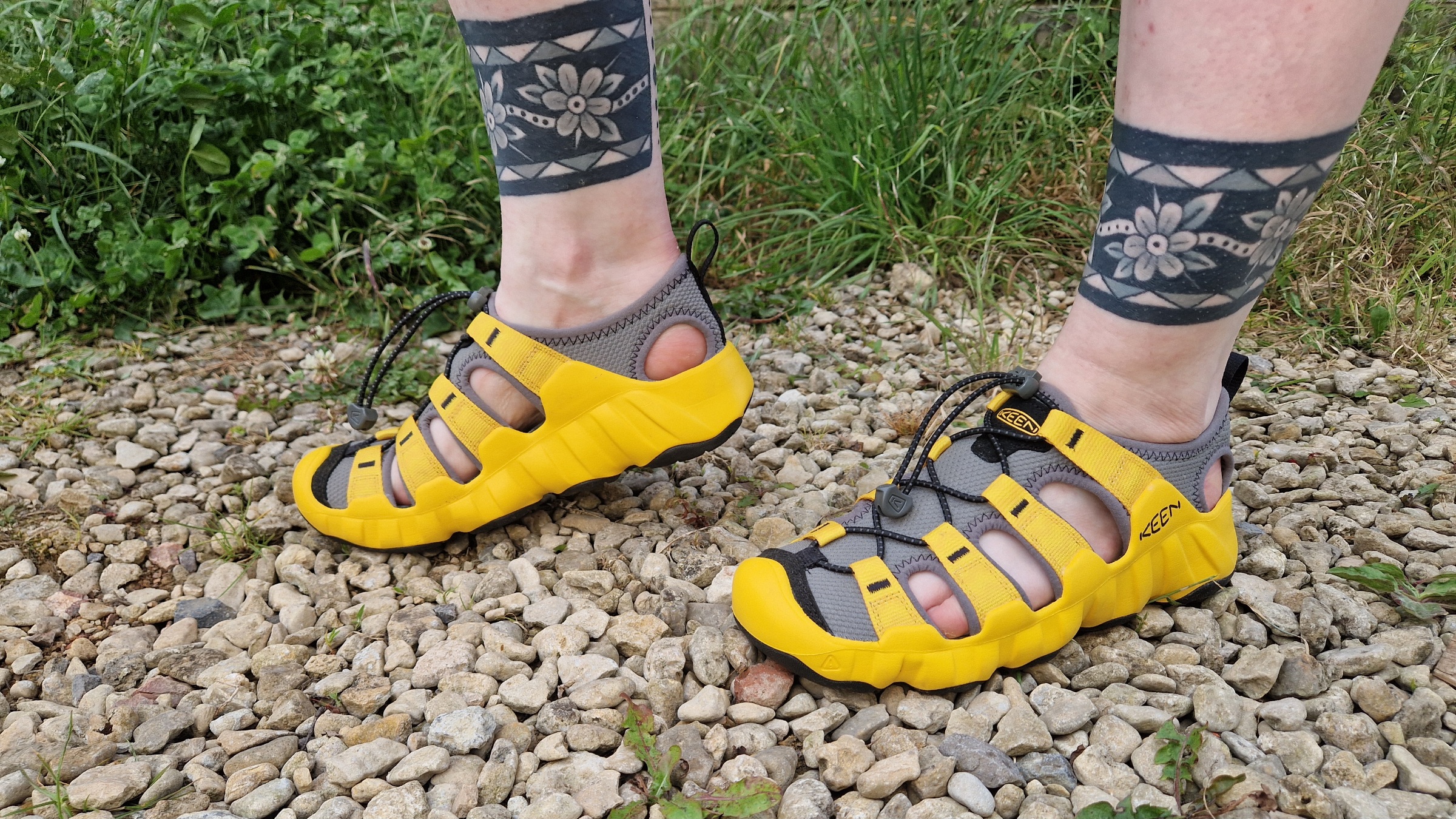
9. Keen Hyperport 2
Our expert review:
Specifications
Buy it if
✔️You’re looking for a walking sandal: These shoes are robust, tough and versatile on different terrains, and give your feet airflow like a flip-flop.
✔️You want breathability: It goes without saying that these are the most breathable shoes I tested. They were great for hot summer days, keeping my feet cool.
Don't buy it if
❌You want a shoe you can wear barefoot: I tried these with and without socks and found that without socks the insole got slick from sweat, making it less comfortable. The sides also chafed my feet without socks.
Cushioning + support: When I say sandals, you probably picture something with a flimsy sole, but that’s not the case for these shoes from KEEN. These are the off-roading Jeep version of sandals: as suitable for hiking up a mountain as they are for inner-city mooching. The sole is cushioned and I felt as though it cradled my foot. It was also an unexpectedly bouncy ride with good energy return on each step.
I tested it with and without socks and preferred the former option. While the insole is lightly textured to prevent slipping, I started sliding around inside the sandals whenever my feet got sweaty. I also found that they chafed the side of my foot without socks on.
Design + features: The toggle fastening and the tabs on the heels made it quick and easy to put on the sandal. You can also tuck the toggle away to prevent it from flapping around and hitting your. The crisscrossed stretchy laces felt secure during my walks but still allowed the shoe to flex with my foot.
The outsole material covers the front of the foot, which I found handy when walking on uneven terrain, as it protected my toes. The toe box is wide too, so your toes can naturally spread out. They’re also great as water shoes (I took them for a dip in the local stream) protecting your feet from underwater rocks and drying off quickly once on land again.
These are functional, comfortable shoes, but I couldn’t get over their appearanace. I tested a pair in a yellow and black colorway and felt as though I was wearing construction equipment on my feet. If you can get past this, they are great, purpose-built sandals and perfect for hot climates.
Materials + durability: These are tough shoes. Despite getting them wet and testing them over many miles on hard concrete and rocky footpaths, there wasn’t a mark on them at the end of the testing period.
The outer sole was grippy on slick surfaces and flexible enough to mold to my feet on uneven surfaces. They weigh 9.52oz / 270g, which is roughly equivalent to some road running shoes I tested. I expected them to be lighter, being sandals, but the sole is heavy duty so that contributes to the overall weight.
I have tested three Keen shoes in total, clocking up 120,000 steps and 22.5 hours with the brand.
Best barefoot
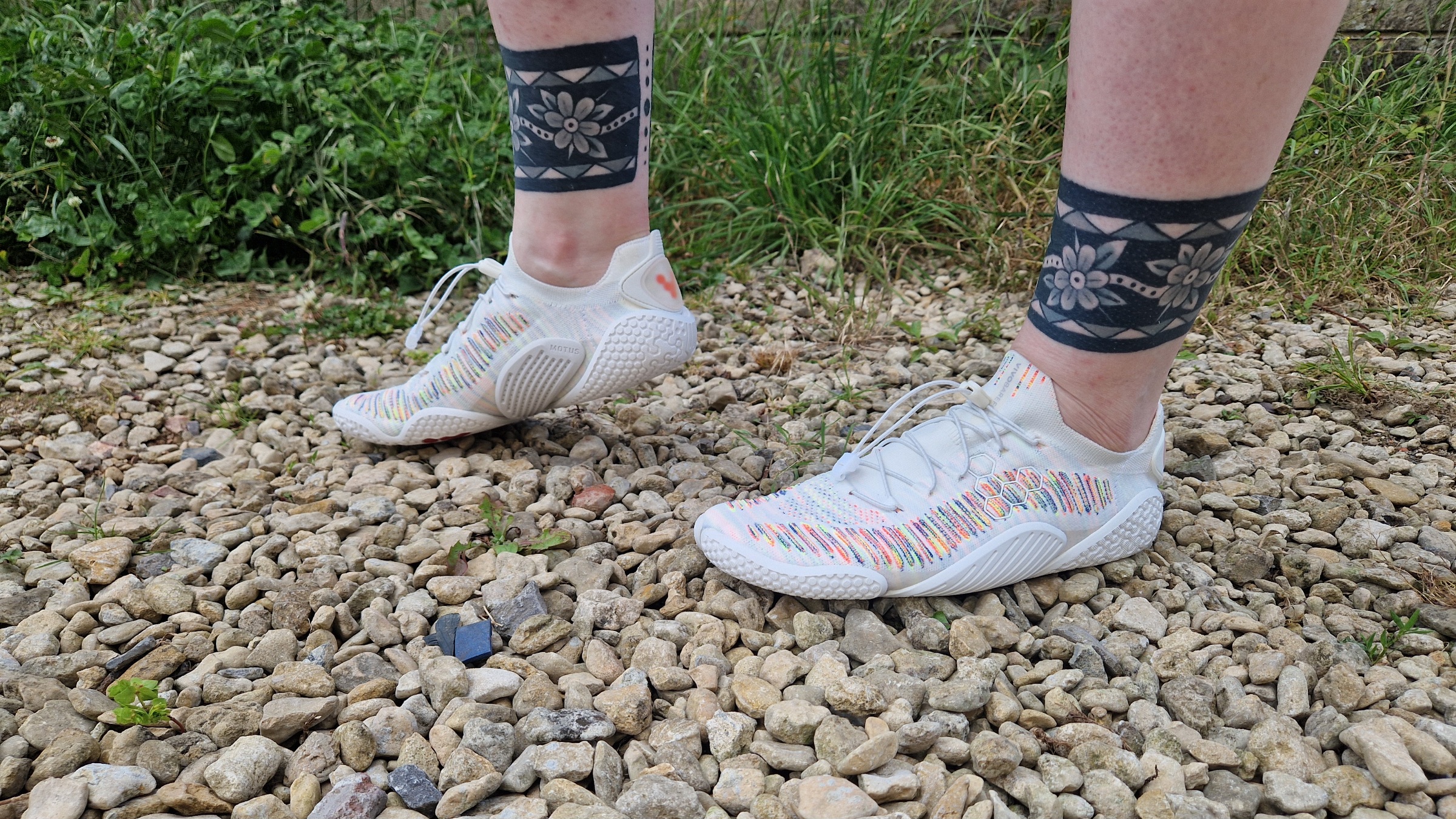
10. Vivobarefoot Motus Flex
Our expert review:
Specifications
Buy it if
✔️You want to try out barefoot shoes: If you’re curious about the barefoot movement and want to see how your feet respond, give them a go.
✔️You want a flexible shoe: These shoes cannot be beaten for flexibility. They’re so flexible that they can be folded into a small ball and will still retain their shape.
Don't buy it if
❌You like a chunky sole: If you like a well-stacked, bouncy shoe with lots of cushioning, this won’t be a good fit for you.
Cushioning + support: The Motus Flex is designed to mimic barefoot walking, allowing your foot do what it “wants” to do. There’s no cushioning or support to speak of, which I thought I’d dislike, but I found the design surprisingly comfortable. The balls of my feet did get a little sore after a few hours of walking, but that’s to be expected when you’re new to barefoot shoes.
Speaking previously with Fit&Well, podiatrist Dr Sondema Nikpmo Tarr said: “To be able to wear barefoot shoes for a full day can take upwards of a month for your feet to adapt. The breaking-in period for barefoot shoes is key in order to prevent joint, tendon or bone injuries.”
The key is to go slowly, wearing them a few times a day for short periods of time, and gradually extending this in line with your own comfort levels. I personally found that if I wore the shoes without socks they rubbed my mid-foot, so I ended up opting for the (daring) socks and barefoot shoes look.
Design + features: I was anxious about my feet being vulnerable in this model, but I needn’t have worried. The protective pieces of outsole that wrapped around my mid-foot were robust, protecting my feet from sharp stones and uneven surfaces.
Despite the “decoupling” of the soles—they are split into three distinct sections to allow your foot to flex—the outsole material comes up quite far on the sides, offering a good amount of protection. There is also a protective rubber plate on the back of the shoe to keep your heel and Achilles tendon safe.
The toggle laces were handy and quick to fasten. There is also a handy hook on the end to tuck them away so the ends aren’t flapping about.
I enjoyed that these shoes allowed my feet to wrap around things. This allowed me to grip like a monkey and stay stable while hopping over rocks and branches.
Materials + durability: After my usual testing period of 40,000 steps these shoes were barely scuffed on the bottoms. Will they last as long as regular shoes, with their thin soles? The rubber construction does seem tough, but I’m skeptical that they’re equally durable as something like the Merrell Moab Speed 2.
They are incredibly lightweight, with the women’s size 7.5 weighing just 214g/7.5 oz. They fold up small too, making them perfect if you want a comfy backup shoe to keep in your bag for the commute home.
Best Nike walking shoe

11. Nike Pegasus 41
Our expert review:
Specifications
Reasons to buy
Reasons to avoid
Buy it if
✔️You want cushioning and comfort: These are very comfortable shoes, with high energy return on par with the Hoka Clifton 9 or Brooks Glycerin. They aren’t quite as chunky or bouncy as the Hoka Bondi 8 or the Skechers Max Cushioning 2.0, but are great for walkers who don’t want too much stacking.
✔️ You want a good multitasker: Although I tested these as walking shoes, you can use these shoes as a day-to-day sneaker or as a running shoe.
✔️You love Nike: These shoes have the classic Nike branding, with a bold swoop design on the side.
Don't buy it if
❌ You like a lot of arch support: These shoes offer quite a neutral ride, which I prefer in a walking shoe, but might not be so good if you want a chunky, highly supportive shoe.
❌You can find the Pegasus 40 in your size: There are very few differences between this model and its previous iteration. Stock is low, so it's hard to find popular sizes, but if you can find a Nike Pegasus 40 that fits it will offer all the same benefits as the Pegasus 41.
Cushioning + support: These are well-cushioned shoes, designed for road running, which makes them excellent for walking on hard surfaces like concrete. If you work on your feet all day, these shoes will keep you feeling comfortable and supported.
The Nike Pegasus 41 is a neutral shoe, so it will suit most people. I'm a supinator, which means that my foot rolls outwards slightly when I walk, but I found this shoe very comfortable. If you have a tendency to overpronate, which means your foot rolls inward to an excessive degree, then you'll need something with more arch support. But anyone with a fairly average gait should get on with these sneakers. You can read more about supination vs pronation in the FAQs below.
Supinators like me also tend to get on with chunkier, stacked soles, as the cushioning absorbs some of the impact when walking. These are not as stacked as some of the other shoes I’ve tested, but the sole is still reasonably chunky.
Design + features: I like the design of the Pegasus sole, with a large crash pad and a divot on the heel that makes it easier to kick these shoes off your feet. They are cute, retro-looking shoes that can be worn casually, despite being designed as athletic shoes.
There's little difference between the older and newer Pegasus models. Nike says that this is a lighter shoe than the previous generation and that the mesh upper is more breathable, but I honestly could not tell the difference. The outsole design on the 41 has a break at the arch that did not feature in the Pegasus 40, but as this part of the foot makes little contact with the ground, I found it made no tangible difference.
Materials + durability: These shoes are decidedly not waterproof and remain a fair-weather shoe only. The mesh is breathable and light, making it great for summer walks where your feet might get sweaty. My pair is white and I did find that they picked up dirt very quickly, but with a quick scrub, they were back to normal.
The sole is durable, with a waffle design that doesn’t pick up pebbles or debris, but still provides a good amount of grip, even on slick surfaces.
I have tested three Nike shoes in total, clocking up 120,000 steps and 22.5 hours with the brand.
Best Hoka walking shoe
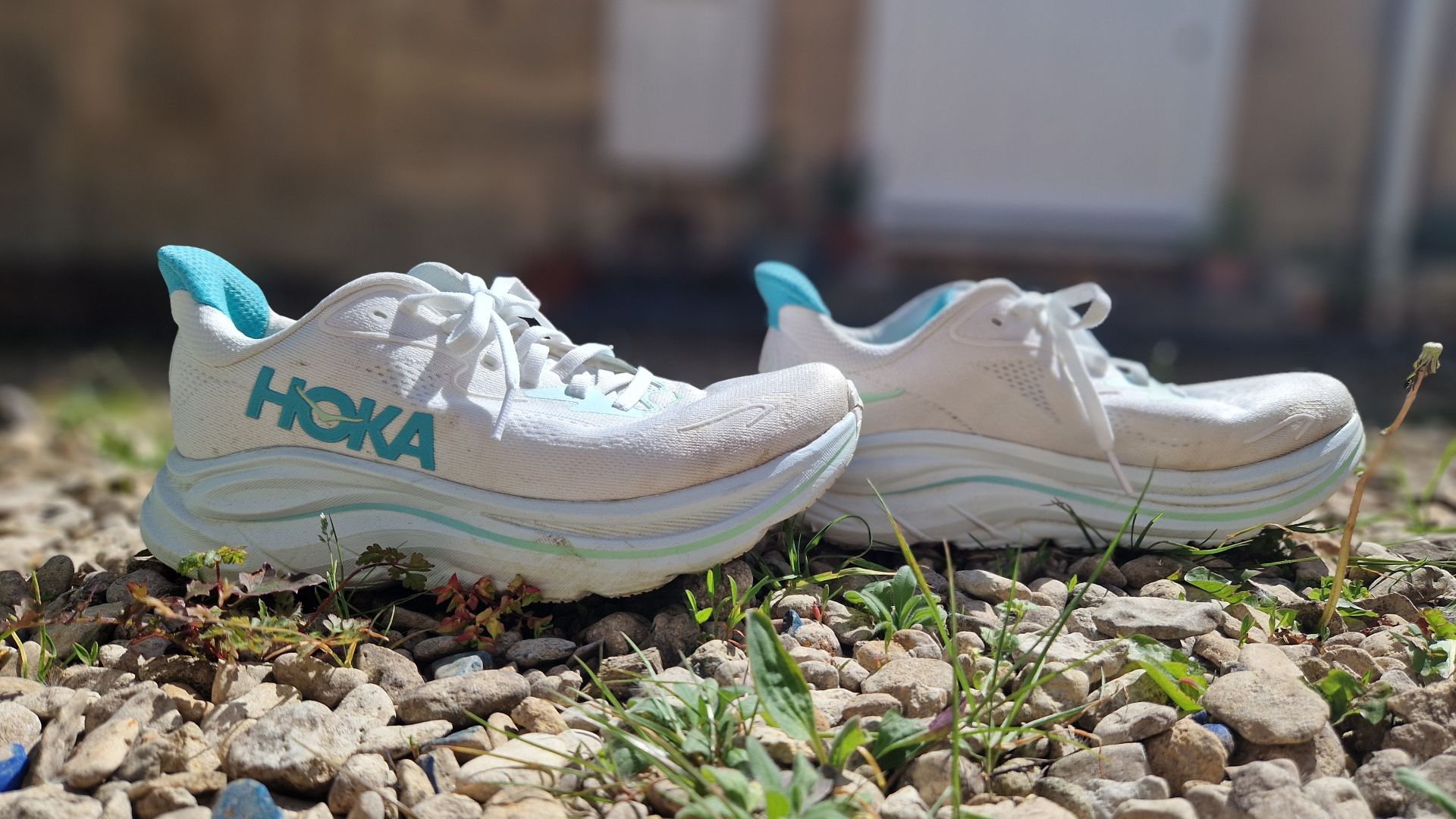
12. Hoka Clifton 10
Our expert review:
Specifications
Reasons to buy
Reasons to avoid
Buy it if
✅You want a light shoe: Of all the Hoka shoes I’ve tested, the thing that sets the Clifton apart is the weight. A pair of women’s shoes weighs just 227 grams, that’s about 8oz, which is a tiny bit heavier than the Clifton 9, but still super light.
✅You like a high collar: I love this feature of the Clifton 10, as it makes the shoe really easy to kick off. It also helps prevent rubbing higher up the heel and on the Achilles tendon (a problem area for me).
Don't buy it if
❌You want a waterproof shoe: As with many shoes in this guide, this is best used as a fair-weather shoe. A few steps over dewy grass and my toes were soaked.
Cushioning + support: This is a plush shoe. It’s well cushioned, bouncy and offers great energy return. It has a rocker design that rolls your feet forward as you walk, without invasively pressing up against the arch of your foot—a common design flaw in running shoes and a pet peeve of mine.
The shoe is designed for road running, so it comes with a chunky sole that’s great for shock absorption and cushioning your feet.
Often, after a long walk over hard ground, I find the balls of my feet feel compressed and I have to rub some life back into them. This was not the case with the Clifton 10, which looked after my feet well, even after walking across concrete surfaces all day.
Design + features: My one complaint about most Hoka shoes is that they don’t give my toes enough room. The Clifton 10 has a wider toe box than other Hokas I’ve tested, but I still felt there wasn’t enough room for my toes to splay out.
One feature that I did like is what Hoka calls the ‘double-lace lock’ (two eyelets at the top of the tongue). This is designed to stop the tongue from drifting, and it works very well. I get frustrated when the tongue of my shoes slips, and often I will over-tighten my shoes to prevent it from happening, but that wasn’t necessary with the Clifton 10.
Materials + durability: I found the texture of the upper a little abrasive to the touch, and the lighter colors on the shoe pick up stains easily—but this is all in the name of breathability. It’s an airy shoe, and it kept my feet cool on long, hot walks.
The sole is durable and well-made, with no flaking or nibbling to the rubber, even after several long walks on hot and uneven ground.
Best Brooks walking shoe
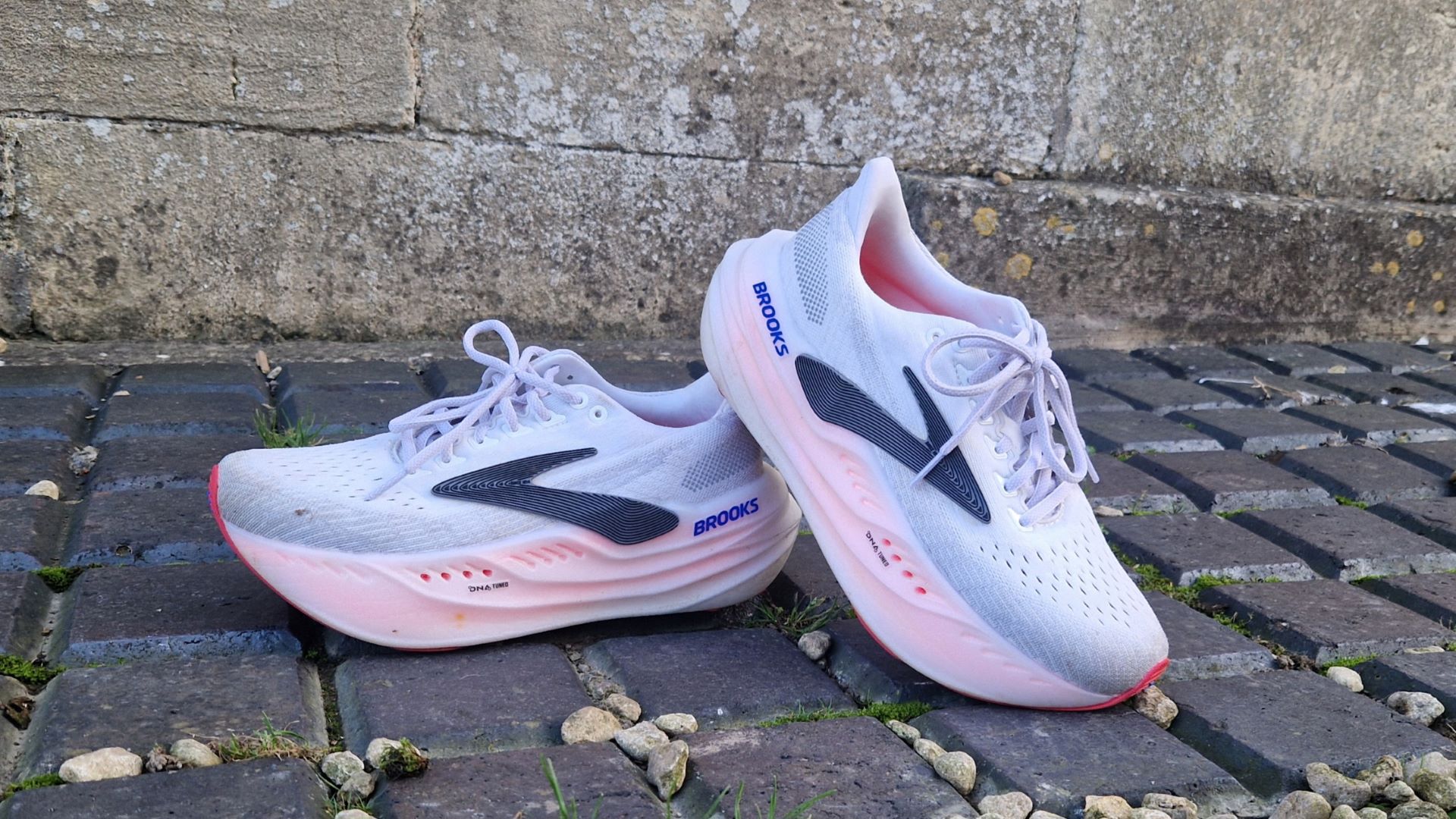
13. Brooks Glycerin Max
Our expert review:
Specifications
Reasons to buy
Reasons to avoid
Buy it if
✅ You want a well-cushioned, stacked shoe: These have the most cushioning of all the Brooks shoes I’ve tested, beating even the Hoka Bondi 8 for comfort.
✅You’re looking for a well-ventilated shoe: The ventilation in these shoes uses the same technology as the Brooks Glycerin 21, making them very breathable.
Don't buy it if
❌You’re on a budget: At $200, these shoes are undeniably expensive. For a similarly plush ride at a lower price, you can get the Hoka Bondi 8 for $165 or the Sketchers Max Cushioning Elite 2 for $100.
❌ You don’t like stacked shoes: If you don’t like super-high shoes, try something like the Brooks Glycerin 21, which is closer to the ground.
Cushioning + support: These are the most cushioned shoes I’ve ever tested. Mega stacking (35mm at the heel, 29mm at the toe) and a nitrogen-infused foam midsole make these shoes super bouncy. In comparison, the Hoka Bondi 8 (my previous favorite) has a 31mm stack at the heel and a 27mm stack at the toe.
The Glycerin Max is a neutral shoe, which will suit most people. If you have issues with overpronation, you will need more arch support, but anyone whose gait is broadly normal will find this shoe comfortable. The Max has a heel-to-toe drop of 6mm, designed to encourage your foot’s forward motion.
Design + features:The shoes lack a heel-pull tab, but the pointed collar is easy to grab, making them easy to pull on. The upper is also super plush without being too heavy.
The shoe features a GlideRoll rocker, to encourage smooth heel-to-toe transitions. In the past, with walking shoes like the Nike Motiva and the Keen WK400, I’ve found the rocker to be intrusive and uncomfortable, pushing up into the middle of my foot and making me feel unstable. However, the Brooks Glycerin Max gets the rocker right. It guides the foot’s forward motion without creating an uneven-feeling ride.
Materials + durability: The stacking on the sole meant I could barely feel hard surfaces like concrete underfoot. The high energy return also put a spring in my step even on an incline and decline.
I’ve had issues with Brooks's shoes slipping at the toe, especially on slick surfaces like concrete. This was a major issue I had with the Ghost range, but the Glycerin Max is thankfully much grippier. I found it easy to keep my footing on uneven surfaces and go up and down hills— top marks, Brooks.
These are not waterproof, but can navigate shallow puddles easily, as the stacking carries you above the water’s surface.
I have tested five Brooks shoes in total, clocking up 200,000 steps and 37.5 hours with the brand.
Best New Balance walking shoe
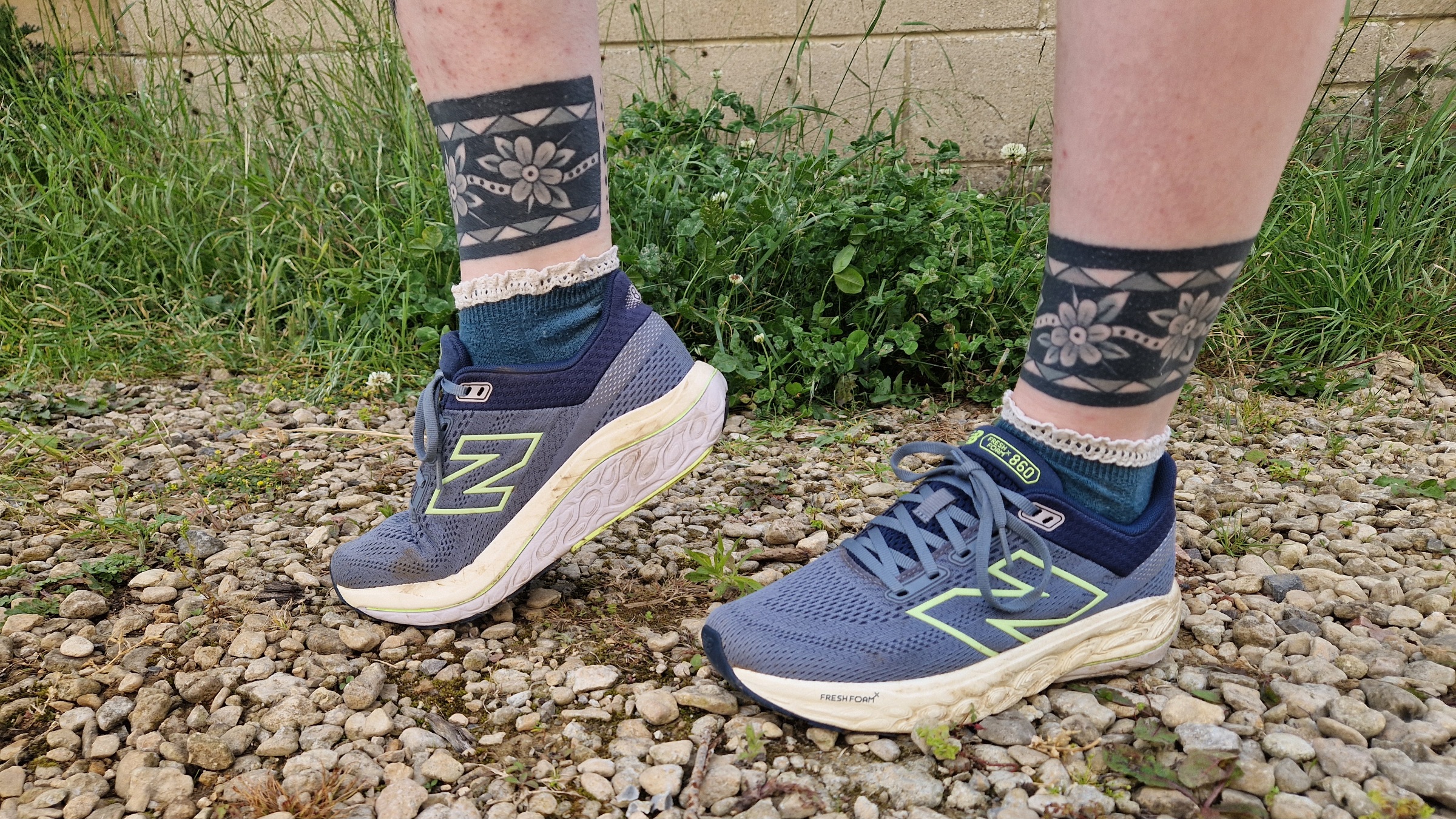
New Balance Fresh foam X 860v14 tested by fitness writer Lou Mudge
14. New Balance Fresh foam X 860v14
Our expert review:
Specifications
Reasons to buy
Reasons to avoid
Buy it if
✅ You want stacked shoes: The chunky sole is satisfying and bouncy to walk on, perfect for those who want a bit of lift.
✅You want a cushioned ride: They are well-cushioned shoes, offering a firm but yielding base for your foot.
Don't buy it if
❌ You have narrower feet: If you are narrow-footed, you may find yourself swimming in these, especially around the toe box.
Cushioning + support: Like the Nike Pegasus 40, these well-stacked shoes are incredibly bouncy. I preferred these models to the other New Balance sneakers I tested—the Hierro v8s—because of their soft, flexible upper. This still offered plenty of support and I felt that my feet were secure and cradled.
They were fairly comfortable shoes off the bat, but I did find that I developed hot spots on the back of my heel after a few hours of walking in them. This only occurred on my first walk, as my foot adapted to the new shoe.
Design + features: I found the fit quite wide around my narrow feet. I was able to lace up tightly to combat this, but the toe box left lots of wiggle room.
These shoes have a rocker design, which means they have a curved sole to help with forward propulsion. A lot of rocker shoes I’ve tested are uncomfortable as they press against the arch of my foot, but I didn’t find that this time. It felt as though the 860v14 had subtle arch support rather than a design that was forcing my foot to roll forwards.
Materials + durability: The mesh upper is breathable and lightweight, making these shoes great for summer. I tested them on some very hot days and although my feet got a little sweaty, they didn’t feel too uncomfortable. The inner dried off quickly after sweaty walks.
The grip is good and the shoes handled slippery surfaces well. They aren’t quite as grippy as the Hierro v8, but the textured sole gave me plenty of purchase on concrete. Like most of the shoes I’ve tested, these models are not waterproof.
I have tested three New Balance shoes in total, clocking up 120,000 steps and 22.5 hours with the brand.
Best Skechers walking shoe
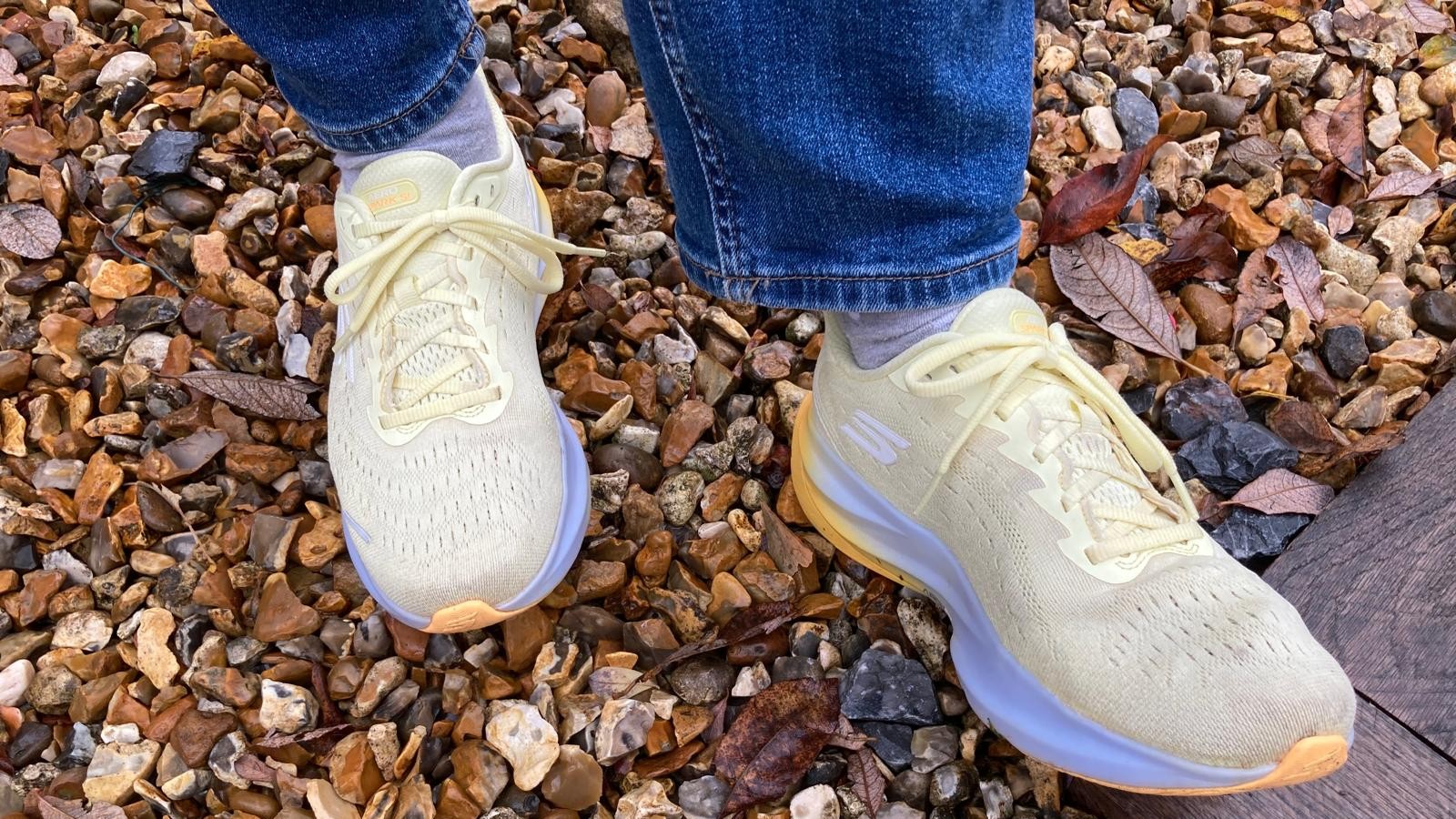
15. Skechers Aero Spark Hands Free Slip-ins Sneaker
Our expert review:
Specifications
Reasons to buy
Reasons to avoid
Buy it if
✔️You like a stacked shoe: At 36mm, this is a well-stacked shoe with plenty of cushioning, the same as my previous favorite from Skechers, the Max Cushioning Elite 2.0
✔️You have wide feet: If you have wide feet, you can’t go far wrong with anything from Skechers.
Don't buy it if
❌You want a waterproof shoe: I walked through enough dewy grass to be certain that these shoes are NOT waterproof.
❌You’re on a budget: It’s not expensive compared to other shoes in this guide, but you can get cheaper options from Skechers.
Cushioning + support: The well-stacked sole makes this a soft, bouncy shoe with great energy return—everything I look for if I’m going to be on my feet all day.
It has the Skechers arch fit feature, which is an extra wad of cushioning in the insole, designed to sit under the arch of the foot. In other shoes, this design has felt intrusive and uncomfortable. However, in this shoe, I found it provided the necessary support to align my feet and relieve pressure on my sensitive big toe joint.
Design + features: One of the stand-out features of this shoe is that it’s got a similar structure to the Hoka Clifton around the ankle. It has a high, sweeping collar that protects the Achilles tendon and makes the shoe easy to kick off.
If you find that the Clifton doesn’t give you enough toe room, this Skechers shoe offers a great alternative, with similar features and more space for wide feet.
Materials + durability: I’ve had problems in the past with Skechers outsoles being weak. However, this shoe features Goodyear rubber on the bottom, which is known for its use in NASCAR tires. While I can't definitively say if this is the reason, the outsoles showed no noticeable wear during my standard testing period, suggesting improved durability.
The upper material on the shoe did get stained pretty quickly, but I was testing a pair in a light color. The shoe returned to its original color after going through the washing machine.
As a side note, Skechers has stated that you can put this shoe in your machine, but that goes against general advice.
I have tested six Skechers shoes in total, clocking up 240,000 steps and 45 hours with the brand.
Other tried and tested shoes
The shoes listed above are the best I've tested, scoring high for comfort, cushioning and durability. I've also tried out the below options, but they didn’t quite make the cut, aren't widely available or are earlier generations of shoes listed above.
Gola Lansen
Our expert review:
Specifications
Reasons to buy
Reasons to avoid
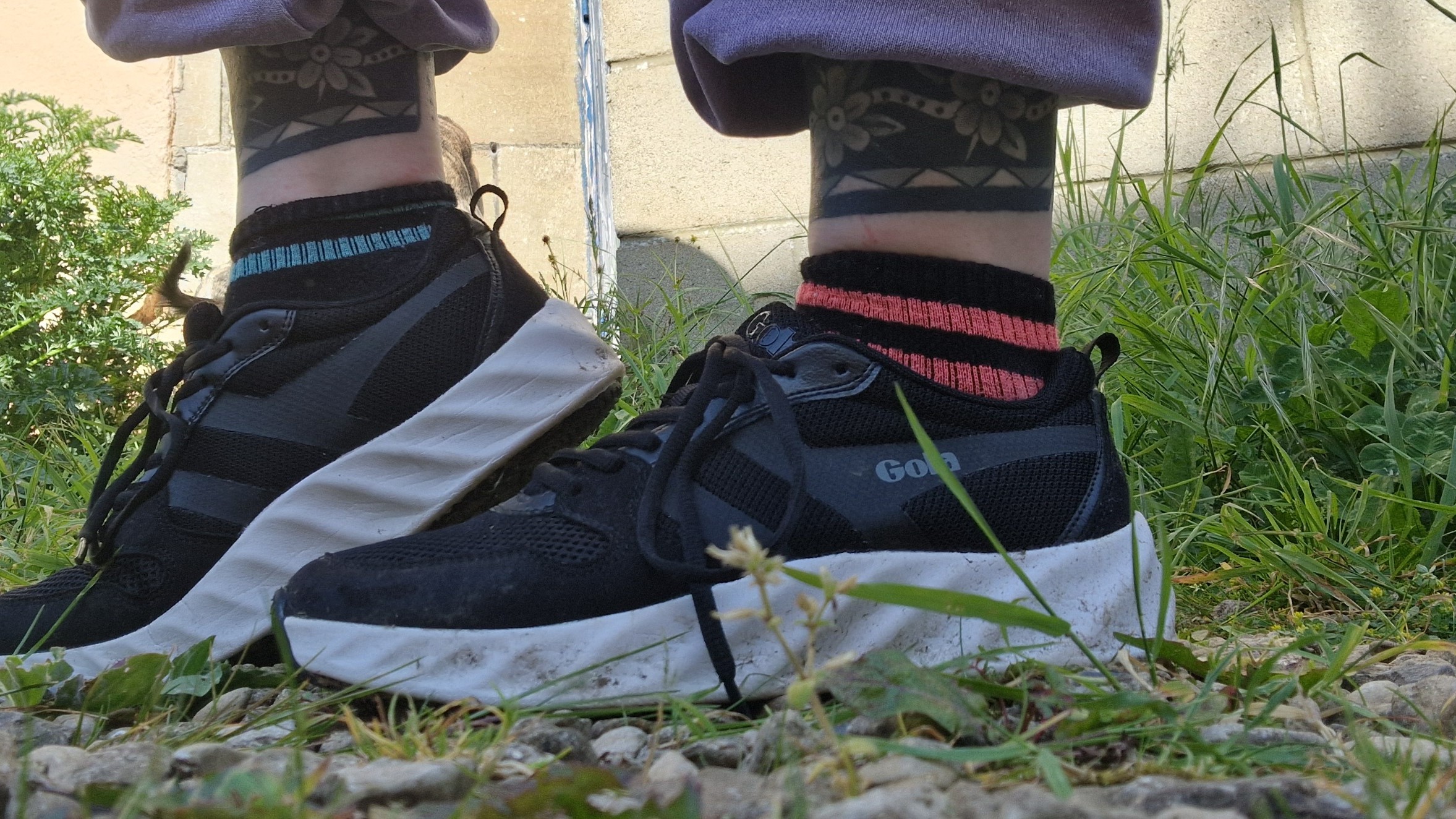
Buy it if
✅ You like simple and stylish: If you want an everyday shoe you can wear anywhere without looking like you’re going to an athletics competition, these shoes are for you.
✅You like a firm sole: I generally like a bouncy sole, but these shoes are firm underfoot. Despite covering miles of concrete, I found these no less comfortable than some super-bouncy offerings from other brands.
✅You don’t want to break the bank: These shoes will suit a lower budget. Although you sacrifice some technical specs and design options from more expensive shoes, if you just want a comfortable, subtle-looking sneaker, these shoes tick that box and more. .
Don't buy it if
❌You like a soft, flexible shoe: The construction of this shoe is quite stiff. The upper and the sole lack the flexibility and cushioning of a shoe designed for distance running. I didn’t find this impeded
❌Not widely available: This was my favorite for the best shoe on a budget for a while, but it is difficult to find in the US, so it has been replaced with a slightly more expensive, but often discounted shoe.
Allbirds Tree Gliders
Our expert review:
Specifications
Reasons to buy
Reasons to avoid
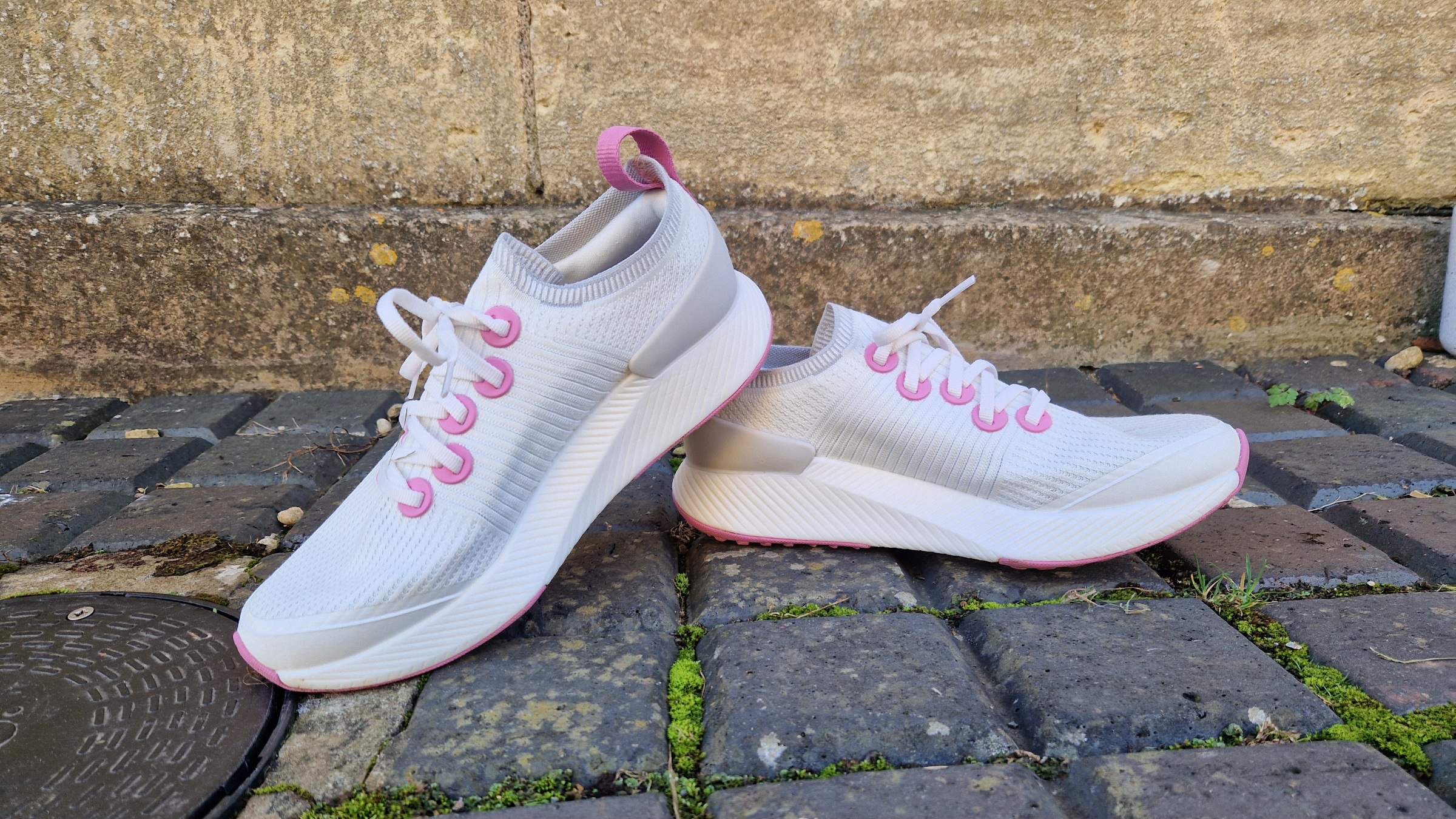
Buy it if
✅ You want a flexible upper: When compared with other hybrid and sports shoes, the uppers on these are more akin to socks. While this means they’re definitely not waterproof, they do flex comfortably with your foot.
✅ You want something lightweight: With their all-in-one design, the Tree Gliders shave off any excess weight from the upper..
Don't buy it if
❌You want a waterproof shoe: These don’t stand up to wet weather. A quick walk across some dewy grass and my socks and feet were immediately soaked.
❌Not like stacking: this isn't a particularly stacked or well-cushioned shoe
New Balance FuelCell SuperComp Trail
Our expert review:
Specifications
Reasons to buy
Reasons to avoid
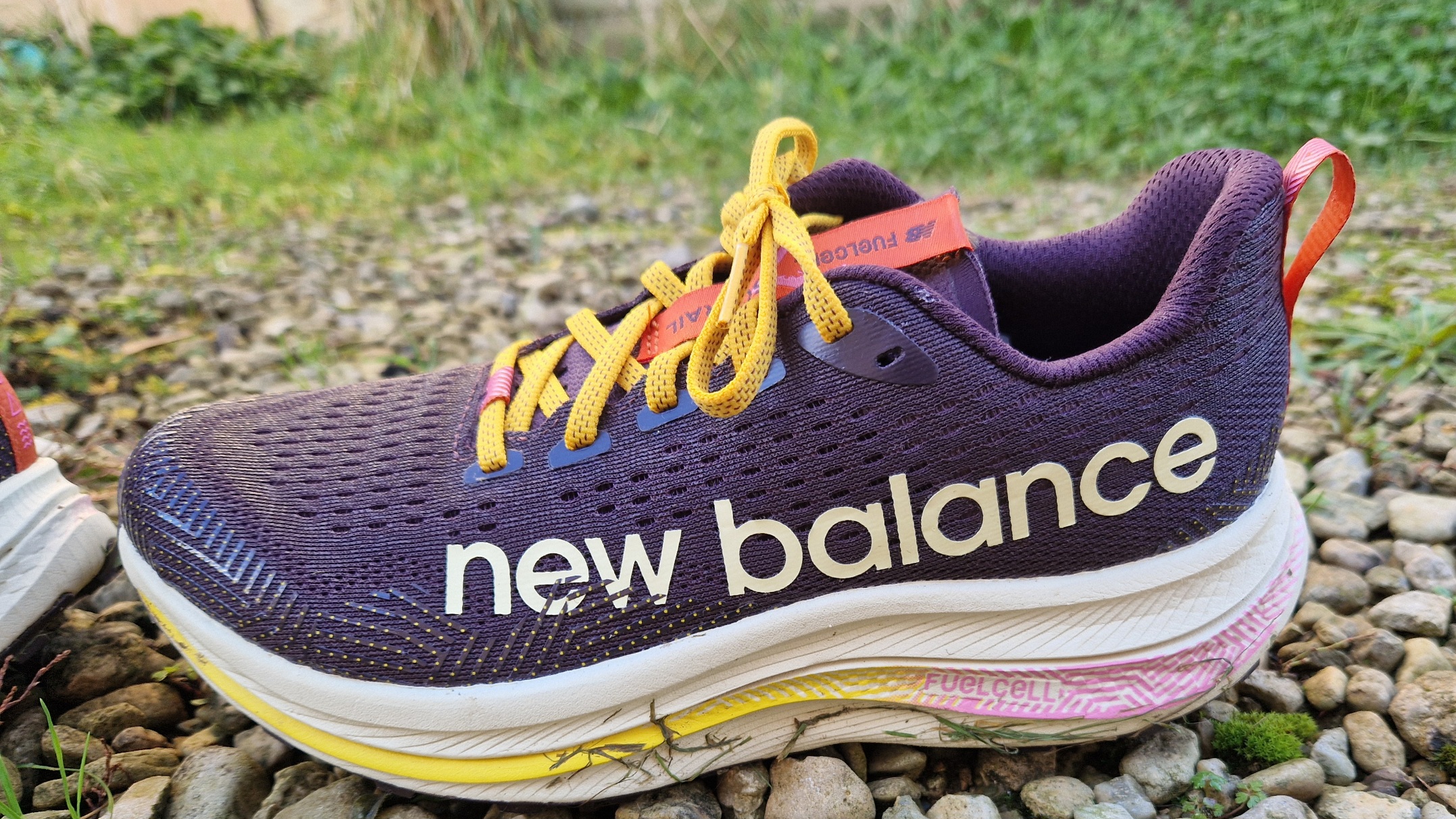
Buy it if
✅ You’re looking for a well-ventilated shoe: The ventilation on these is good, making them good for summer. Trail shoes are often heavy and quite cumbersome, creating a sweaty foot in hot weather, but the breathable design means this is not an issue.
✅ You want an unshakable grip underfoot: These shoes are as good as our “best walking shoe for grip” (also New Balance shoes) in terms of grip underfoot. However, they let themselves down in other areas.
Don't buy it if
❌You want a waterproof shoe: Despite being a trail shoe, these are not watertight. If that’s a feature you need, I’d suggest the Adidas Terrex.
❌You have to buy online: The biggest downside of these shoes is that the sizing is unpredictable. If you can’t get to a store to test them out, I’d caution against buying online, as you might find your usual size doesn’t fit.
Brooks Ghost 16
Our expert review:
Specifications
Reasons to buy
Reasons to avoid
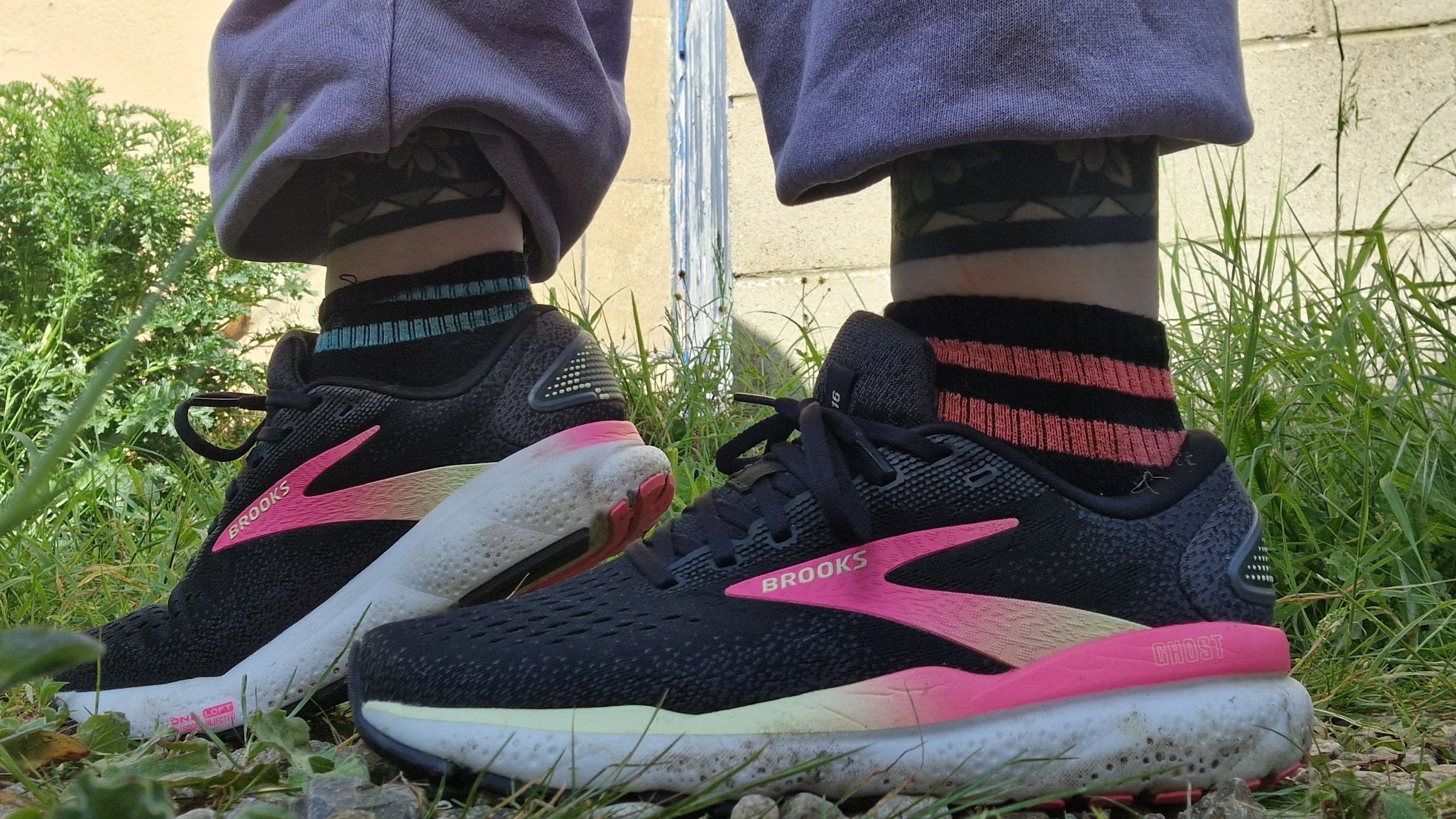
Don't buy it if
❌You want superior grip: The main sole is fine and the grooves work well to maintain grip on slick pavements, but as soon as I shifted my weight to the front of the shoe, I lost traction.
❌You want to upgrade from the Brooks Ghost 15: I much preferred the Brooks Ghost 15 and still wear them occasionally since testing them. I won’t be reaching for the Brooks Ghost 16 as a day-to-day running shoe.
Buy it if
✅ You like a flexible upper: The uppers fall somewhere in the middle for flexibility. They are more rigid than something like the Hoka Bondi 8 or Nike Pegasus, but less rigid than the Hoka Transport or Merrell Moab Speed 2.
✅ You want a lightweight shoe: At 9.5oz/ 269.3g(men) and 8.5oz / 241.0g (women), I can’t fault the Ghost 16 for being lightweight. The sole is firm and has a medium level of bounce without feeling like you are carrying around excess weight or feeling dragged down.

Skechers Go Walk 7 Clear Path
Our expert review:
Specifications
Reasons to buy
Reasons to avoid
Buy it if
✅ You love a comfy shoe: I cannot fault this shoe for comfort. It is well-cushioned with an ultra springy sole that will carry you effortlessly over long distances. An ideal pick for summer tourists looking to explore a city.
✅ You’re looking for a casual shoe: Th design is subtly stylish enough to be worn with any outfit without looking too much like a chunky walking shoe.
✅ You're on a budget: This model has an MSRP of $80, but it's usually discounted to $59.99.
Don't buy it if
❌ You want an all-terrain shoe: When I tackled a rural walk in these shoes, I had to pick pebbles out of the sole. This quickly became tiring and I found that removing the debris often caused damage to the sole.
❌ You want something waterproof: The mesh upper is great for cooling your feet, but unfortunately that means you’ll get soaked as soon as you step outside in the rain. These are more of a summer shoe.

Skechers Slip-ins: Arch Fit 2.0
Our expert review:
Specifications
Reasons to buy
Reasons to avoid
Buy it if
✅You want a slip-on shoe: This is a specialized shoe, and while it didn’t have the fit or comfort I was looking for, for someone with reduced mobility, who struggles to bend or needs to take their shoes on and off frequently, this shoe may be a game changer.
✅You need a high level of arch support: I don’t enjoy the level of arch support offered by this shoe, but if you need it then these shoes provide exactly that.
Don't buy it if
❌You don’t like chunky soles: The heel is 1¾ inches, making the soles significantly chunkier than I would like.
❌You want a snuggly fitted shoe: The slip-in technology means there’s less ankle support on these shoes. Even when you tighten the laces, they are more open around the ankles than I liked.

Nike Motiva
Our expert review:
Specifications
Reasons to buy
Reasons to avoid
Buy it if
✅You love a chunky sole: The main selling point of the Motivas are that they have chunky supportive soles. This isn’t really my jam and I found them heavy and cumbersome however if you want that level of arch support they’re sure to be a winner.
✅You need a good grip: You can trust the Motivas to keep you steady. The rubber soles grip concrete paths snuggly and the deeply grooved underside of the shoe handles pivots and swift directional changes with ease.
Don't buy it if
❌You want something springy: The Motivas don’t have the springiest soles: they’re firm, which makes them less comfortable than other shoes I’ve tested. While that solidity will carry you over a variety of uneven surfaces, it makes the shoes quite hard.
❌You like a sleek shoe: Unfortunately, they look as comfortable as they feel. The sole’s heel comes out much further than the actual back of the shoe, which is helpful when taking them off, but doesn’t make them attractive.
How we test the best shoes for walking
I’ve tested the most popular walking shoes from all the major shoe brands: Nike, New Balance, Hoka, Skechers and more. I do a minimum of 40,000 steps in each shoe, including a five-mile walk. Each shoe will have gone through around 20m/35km of walking before I write my review.
I make sure to test each shoe over the same variety of terrain and in different weather conditions to get an accurate idea of how they perform and any major design flaws. Some shoes that perform beautifully in dry weather or on asphalt surfaces fail to measure up on slick grass or uneven terrain.
I clock up more than 600 miles each year testing shoes in this way, and I’ve conducted this testing alone. I've tested a total of 38 shoes since I started and have been testing for this guide for nearly two years.
The benefit of doing this, rather than reviewing with a wider team, is that I now have an encyclopedic knowledge of all these shoes and can compare them fairly and accurately. Here’s a list of the criteria I consider when testing a shoe.
- Cushioning: I like a shoe with a lot of cushioning for long walks on concrete, so I evaluate how much support there is in the midsole and review how well it retains its springiness and bounce. If it has overly firm cushioning, I’ll flag that in the review, and if I find it interferes with my natural gait, I’ll mention that too.
- Comfort and fit: For a shoe to be comfortable, it needs to fit well without pinching the toes or rubbing the heel, so I’ll evaluate how well it does this. Breathability is a big factor here, too, so I’ll always highlight when a shoe has managed to keep my feet cool. I’ll also analyze whether or not the fit is true to size and if you need to adjust your order accordingly. Some shoes require a ‘breaking in’ period to be comfortable; if that’s the case I’ll mention it in the review.
- Stability and grip: I make sure I test each shoe over different terrains (both rural footpaths and concrete) to examine how well they handle different surfaces. I’ll also always analyze how well the shoes’ lugs grip concrete in wet, slippery weather. If a shoe has an extra-wide crash pad for stability on uneven surfaces, it will earn extra points from me.
- Value for money: A good set of walking shoes can cost upwards of $150, but you don’t need to spend this much to find something comfortable. When I give a shoe a star rating, I’ll take its cost into account. If I don’t think the price is justified, it will lose points.
- Durability: Each shoe is tested for a minimum of 40,00 steps. If it doesn’t hold up well for this testing period, I’ll flag this. I also revisit the shoes after a month and update my review if I think the level of disintegration is unacceptable.
How to choose the best walking shoes
There are three main things to consider when considering how to choose the best walking trainers for you: cushioning, support and breathability.
Cushioning
You need a trainer with plenty of cushioning to help relieve the pressure on your feet when walking, and ideally this will be zoned to provide extra where you need it. Some shoes also use foam that provides rebound; once compressed, it will spring back into place that can help give your feet a little energy boost.
Support
Support is also important, ensuring that both the sole and the whole foot are able to move but without moving about within the trainer. If you’re walking all day, also check for internal seams which can cause hot spots or rub and produce blisters. The best walking trainers will often have a seam-free construction to avoid this.
Breathability
Breathability is especially important for walking in hot weather, or if you’re prone to hot feet. That said, this often comes at the cost of weatherproofing, so if you’ll be walking in wet conditions you may prefer a shoe that provides a little more weather protection.
FAQs
How should walking shoes fit?
"You need to make sure that it is snug but not tight and not too loose," explains podiatrist Dr. Lori Grant. She says a shoe shouldn't be so big that your foot moves back and forth inside, as this will cause blisters. At the same time, it shouldn't be so snug that it restricts toe movement. "You should be able to wiggle your toes, so they aren't lying on top of each other or cramped in the toe box," she adds.
Dr. Grant says there should be a thumb's width of space between your longest toe (either your big toe or you second toe) and the tip of the shoe.
How long do walking shoes last?
Dr. Grant says there's some disagreement on how frequently you should change walking shoes, but you will usually want to change them every six months.
"Some people say it should go by mileage—every 500 miles you walk you should change your shoes — then others say that you should change them every six months to a year. I usually tell patients to change their shoes after no more than a year, but if you start getting little aches and pains that you're not used to then that's usually a sign that it is time to get a new pair. If your heels hurt or the balls of your feet start hurting, it’s time for new shoes.”
Is it ok to wear running shoes for walking?
Most running shoes are made with similar design features to the best walking shoes so will be suitable for keeping you comfy on walks. However, this varies between models and manufacturers.
So, a pair designed for speed and reaching the 5km finish line won't be best suited to a long hike on rough terrain. This is why it pays to consider the type of walking you do and find a pair of shoes to match this.
Running shoes also tend to have a lot of cushioning underfoot, which won't suit everyone.
"For longer walks, [well-stacked shoes] absorb some of the shock and reduce the impact on your feet. However, if you are an older person or someone who has balance issues the thicker soles increase the possibility of you rolling your ankle and increase fall potential. You just need to make sure it is the right shoe for you. But they are definitely helpful for people that are wanting to walk long distances or run longer distances."
What's the difference between pronation and supination?
"Supination is where the foot rolls outward and you end up putting more pressure on the outside of your foot where the ankle rolls inward. Pronation happens when you start putting more pressure on the inside of the foot, along the inside of your ankle, and down into your big toe. So pronation is where your ankle rolls inward and supination is where your ankle rolls outward," explains Dr. Grant.
I asked Dr. Grant if either of these is preferable for good health and she explained that a little bit of supination or pronation is natural.
"When it becomes bad for you is if you overpronate or over supinate. If you over supinate, then that increases your risk of rolling your ankle and if you overpronate that's usually associated with tendon issues. There's a certain type of tendonitis that you can get because of it. It also usually relates more to being flat-footed."
Which are the best HOKA shoes for walking?
It's no secret that I love HOKA, and I've been fortunate enough to test several of their shoes. Most of the HOKA shoes I've tested made it into one of the top spots of the guide, with the HOKA Bondi 8 taking the crown as the best walking shoe overall.
I was disappointed by the performance of the Hoka Bondi 9 in comparison to the 8, finding it a tighter shoe with little improvement on the design of the 8, so it did not make it into my top 15.
I adored the Bondi 8 because it is a chunky, supportive shoe that remains flexible and it has a soft, breathable upper. It has a wider crash pad than the other HOKA shoes, giving it a “walking on air” feeling, even if you are stomping up a hill or clocking up the miles on hard surfaces.
The Bondi 9 was flawed in comparison, and while it was still a well-cushioned, bouncy shoe, it didn't measure up to its predecessor as it fell short in other areas, like toe room and the lack of a heel pull tab.
I tested the HOKA Clifton 9 close on the heels of the Bondi 8 and rated it almost as highly. It offes almost as much cushion and bounce as the Bondi 8 in a slightly more streamlined, narrower package. I rated the Clifton 9 as the best shoe for walking on concrete because it is slightly lighter than the Bondi 8.
When I tested the Hoka Clifton 10, it quickly became my favorite Hoka shoe overall, trumping even the Bondi 8.
Both the Clifton and Bondi series are primarily designed to be used as road running shoes, but if you're a runner, the Clifton would be a better choice. When running in the Bondi, I found the wide crash pad (which I love as a walker) tended to clip the side of my leading leg. The Clifton is also a slimmer shoe and doesn’t have this problem. The Clifton comes further up the back of the heel and is marginally lighter than the Bondi.
The HOKA Transport is a different animal altogether, with less padding, a more stiff, structured upper, and an easy-to-fasten, slip-in design. There is less cushioning underfoot in the Transport than in the Bondi and the Clifton, because it is designed to be a hybrid shoe that can easily transition between running and hiking. When hiking on softer terrains like grass, cushioning is less important as the surface underfoot is more forgiving, and large stack heights can make the shoe unstable, meaning for hiking and hybrid shoes, I prioritize grip over cushioning.
However, the Transport is still comfortable and relatively bouncy, and the toggle fastening makes it easy to get on and off. It's more of an everyday sneaker than the other HOKAs I've tested, with a more understated style that might appeal to those who don't enjoy the sporty vibe of the other two.
I also tested the Hoka Cielo X1 2.0, which is designed for sprinting and track sports. It has a transparent mesh upper (about as far from waterproof as you can get) and a long divot down the middle of the outsole to save on weight.
It is an extremely lightweight shoe (8.1 oz for the men's, 6.8 oz for the women's) and clearly built for speed, but not a great walking shoe, as the sole picks up pebbles.
Start your week with achievable workout ideas, health tips and wellbeing advice in your inbox.

Lou Mudge is a Health Writer at Future Plc, working across Fit&Well and Coach. She previously worked for Live Science, and regularly writes for Space.com and Pet's Radar. Based in Bath, UK, she has a passion for food, nutrition and health and is eager to demystify diet culture in order to make health and fitness accessible to everybody.
Multiple diagnoses in her early twenties sparked an interest in the gut-brain axis and the impact that diet and exercise can have on both physical and mental health. She was put on the FODMAP elimination diet during this time and learned to adapt recipes to fit these parameters, while retaining core flavors and textures, and now enjoys cooking for gut health.